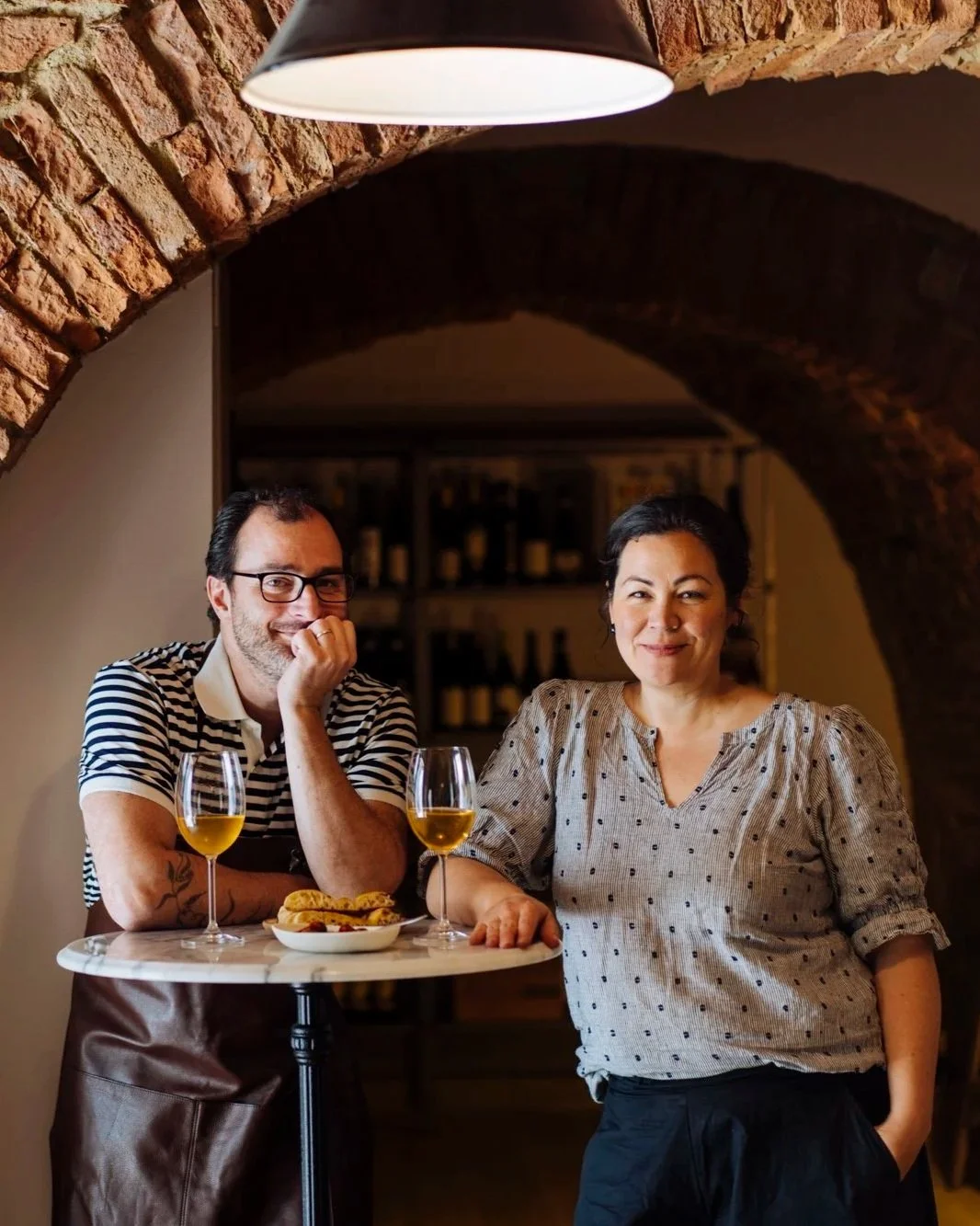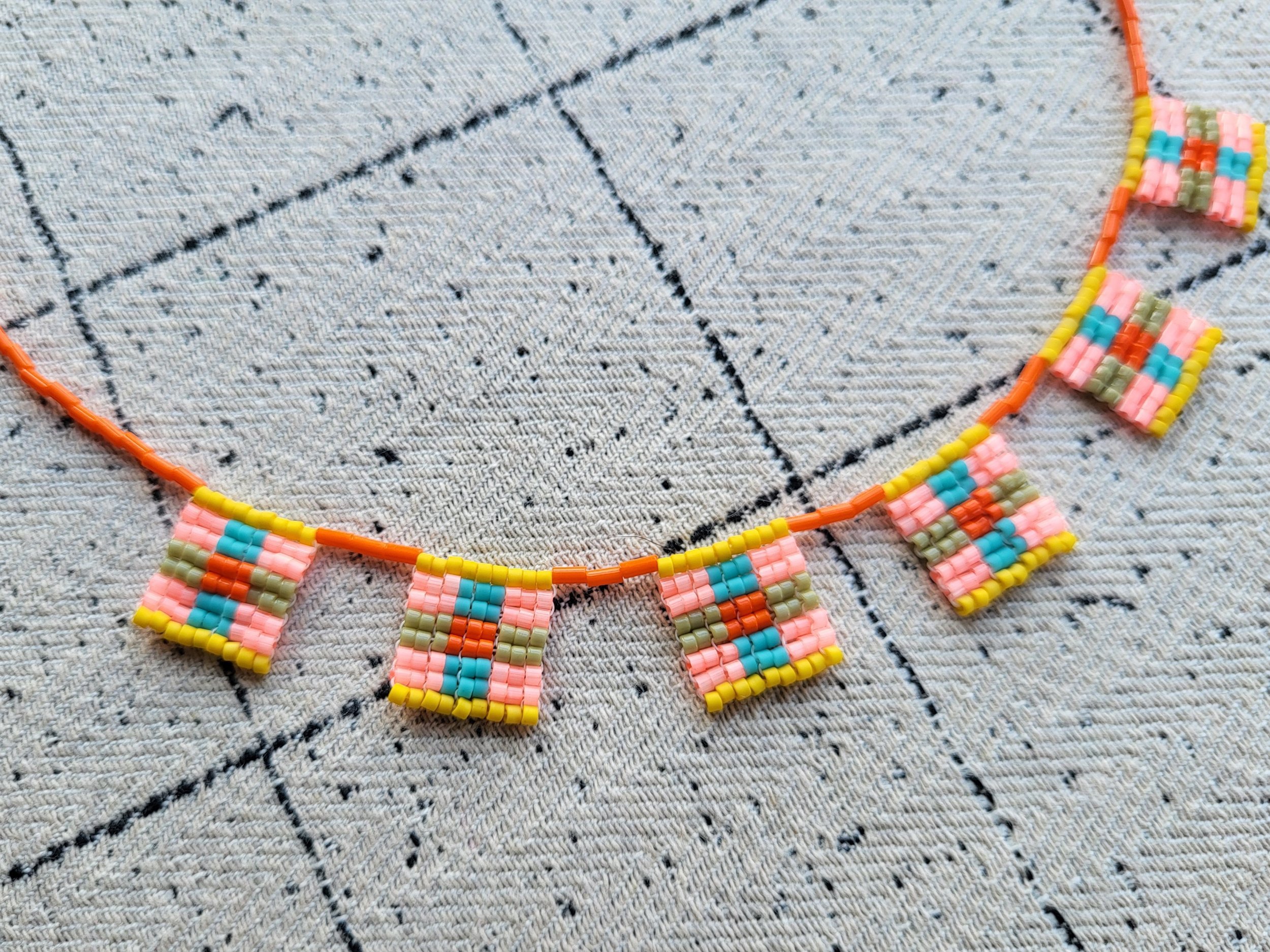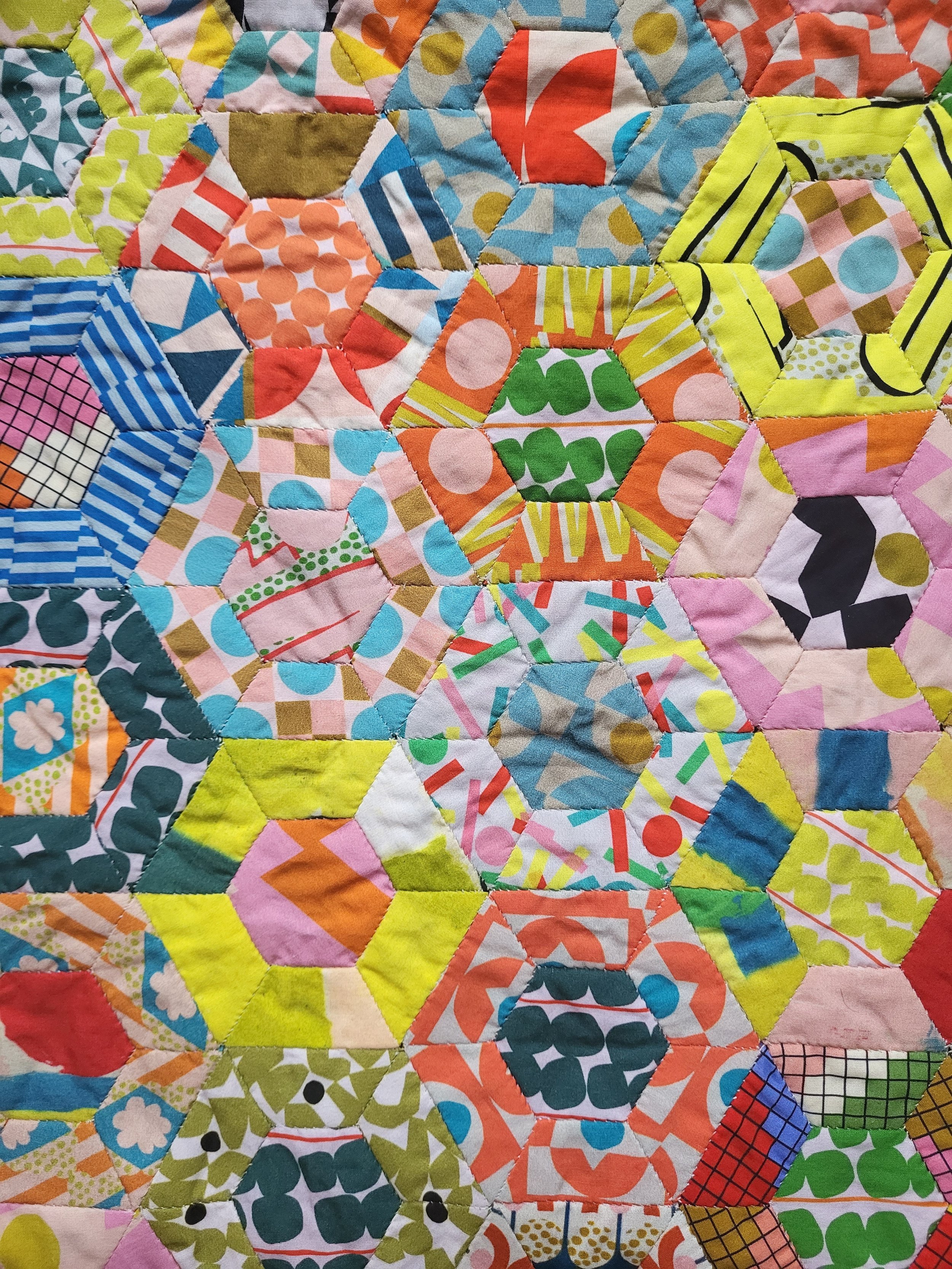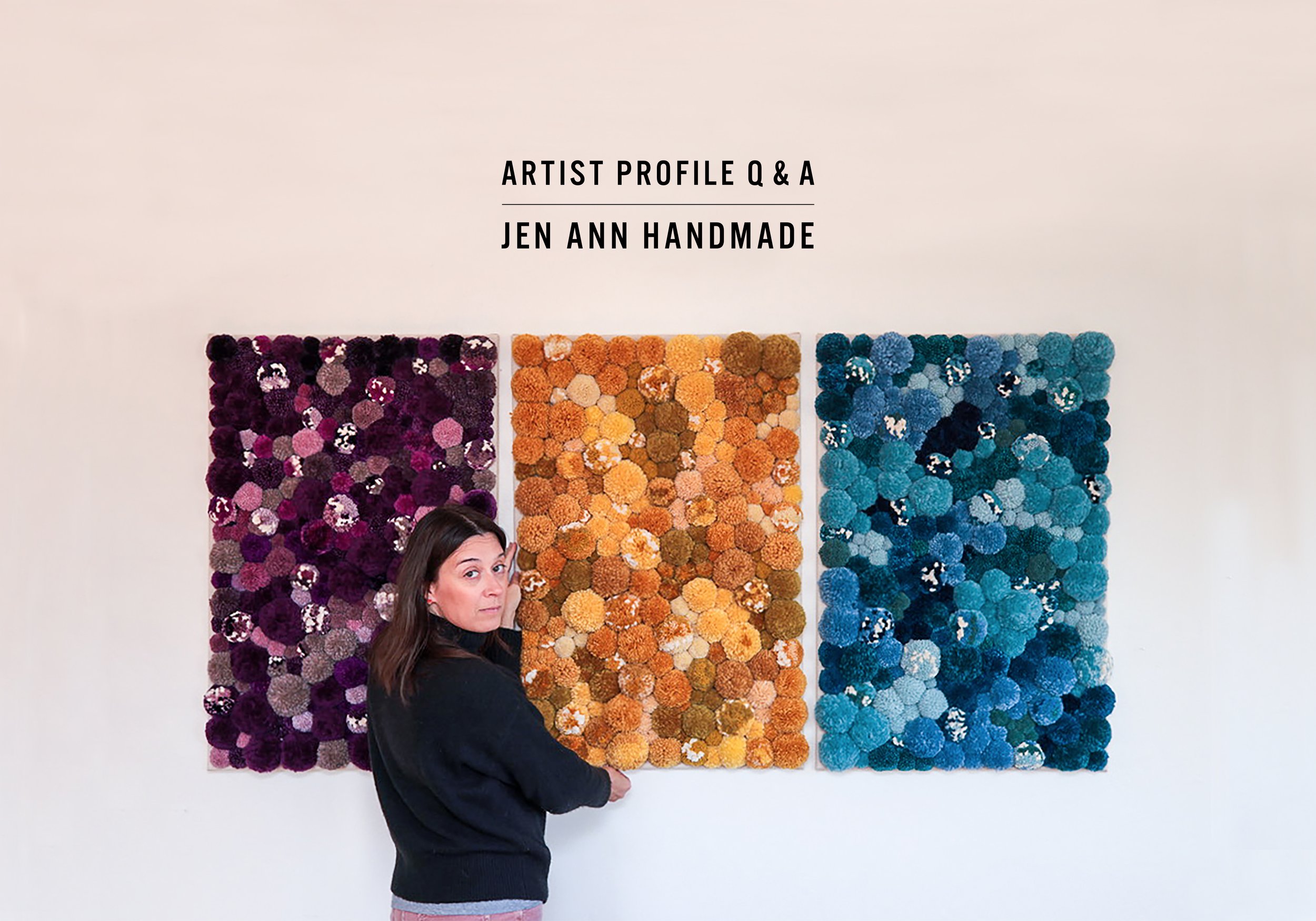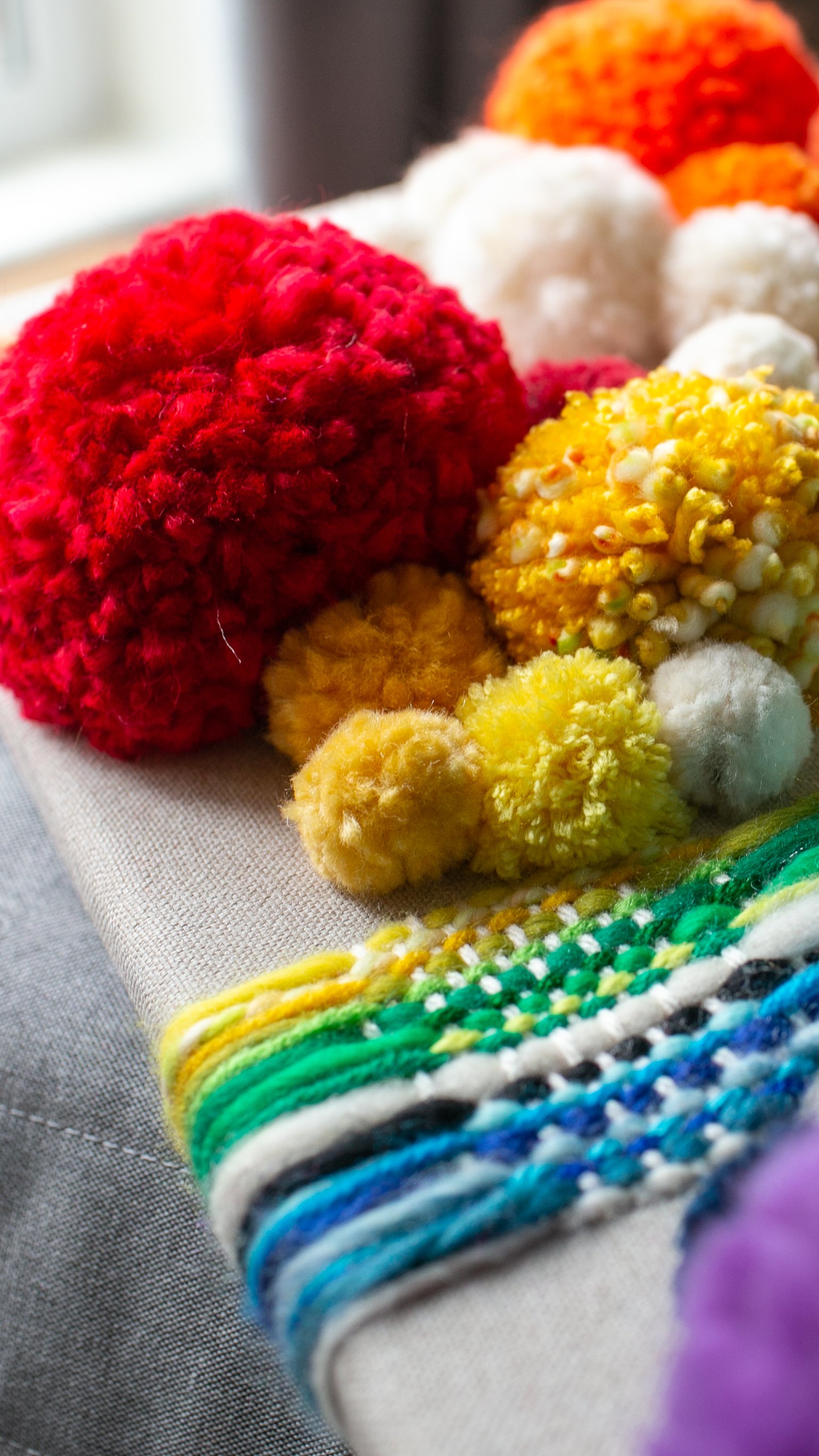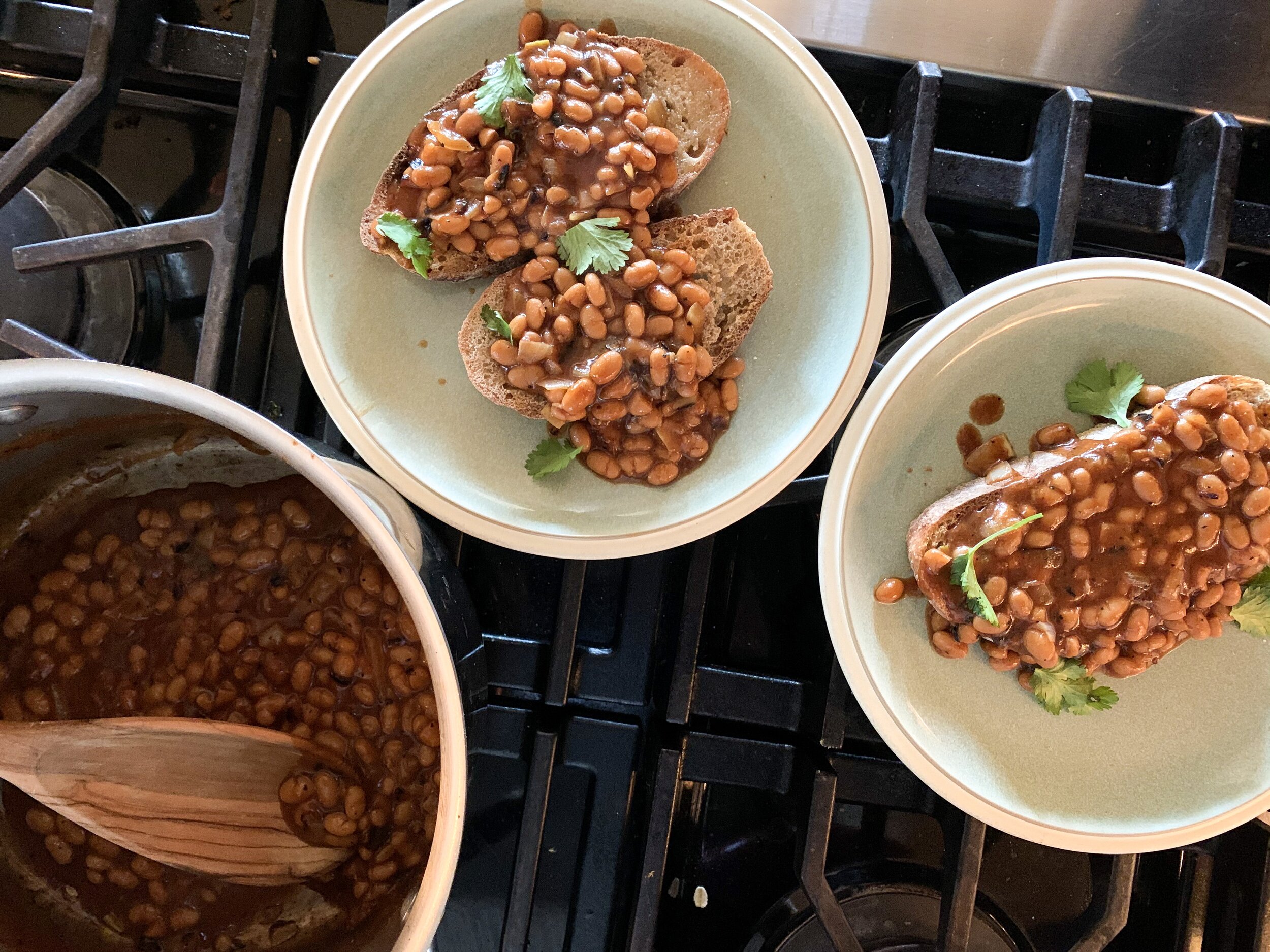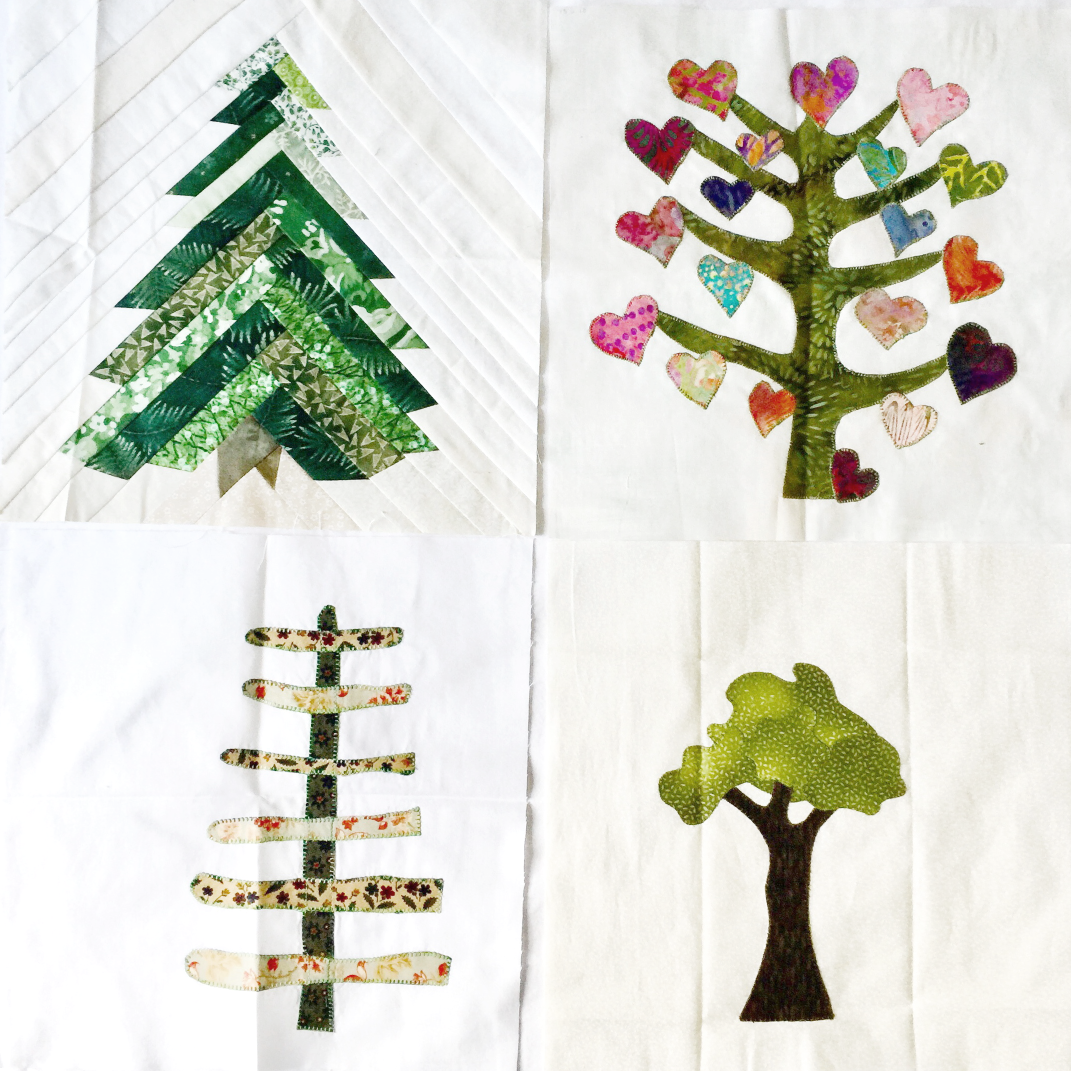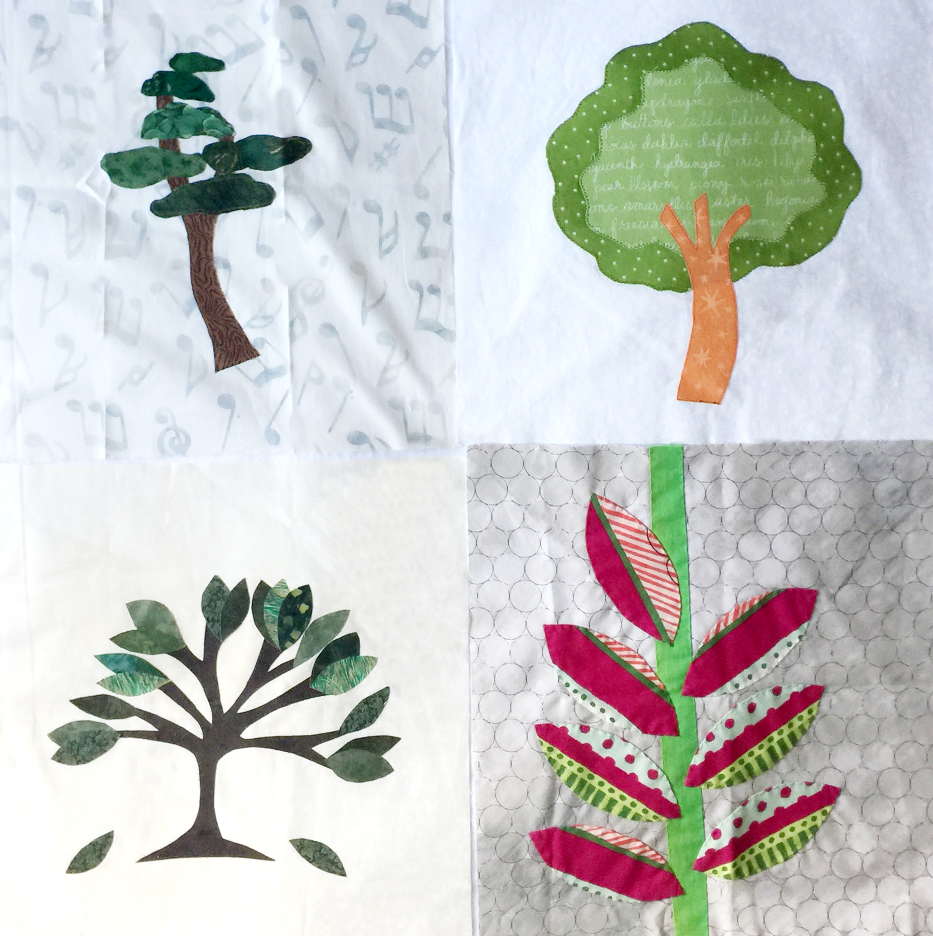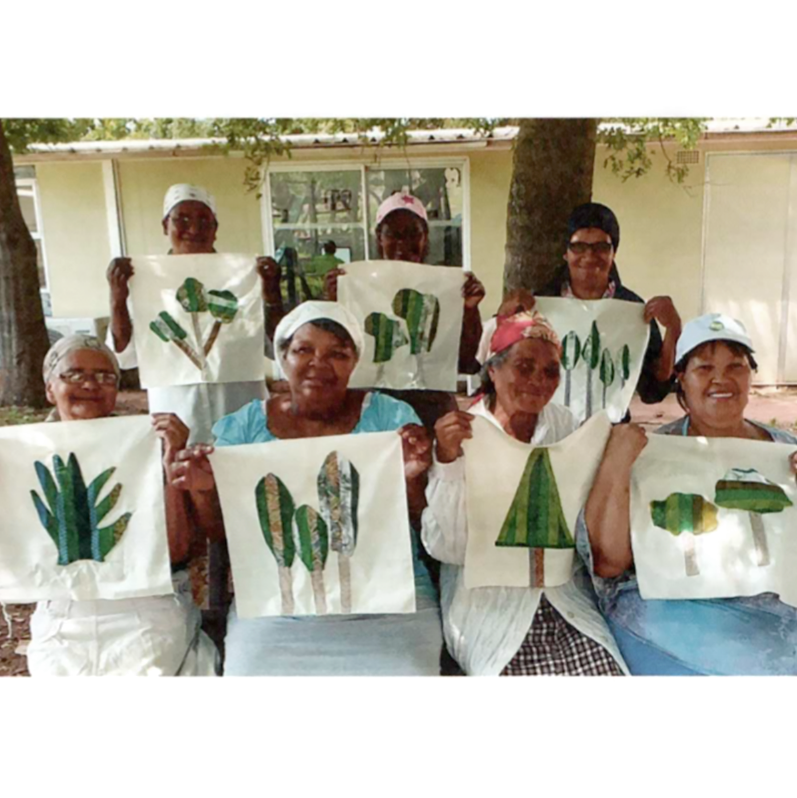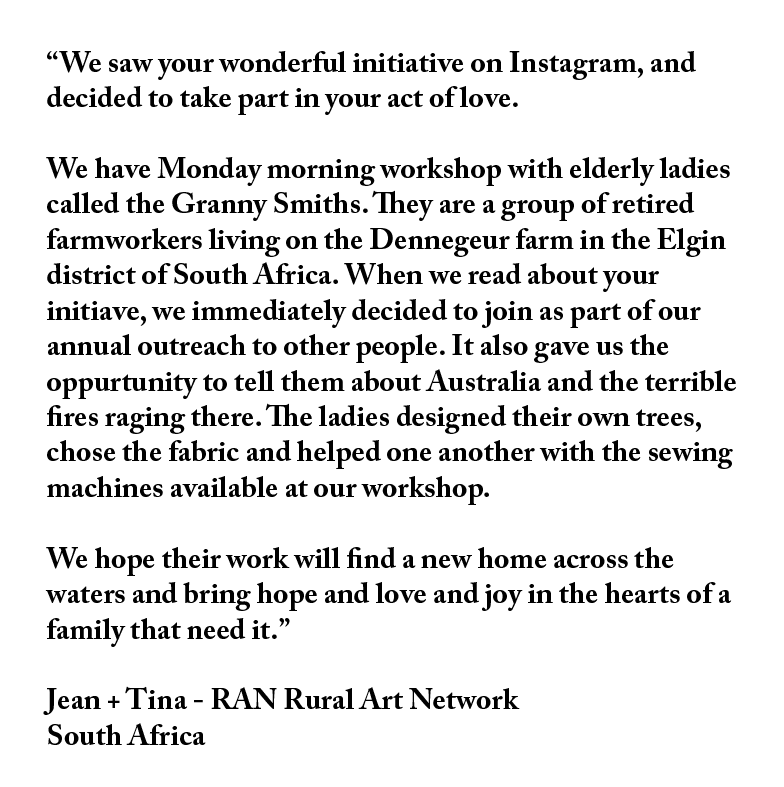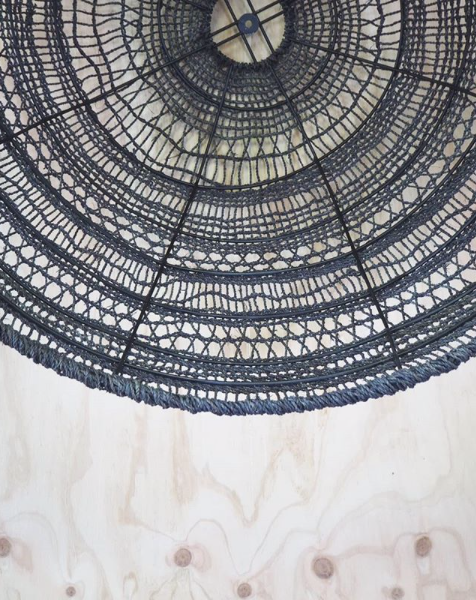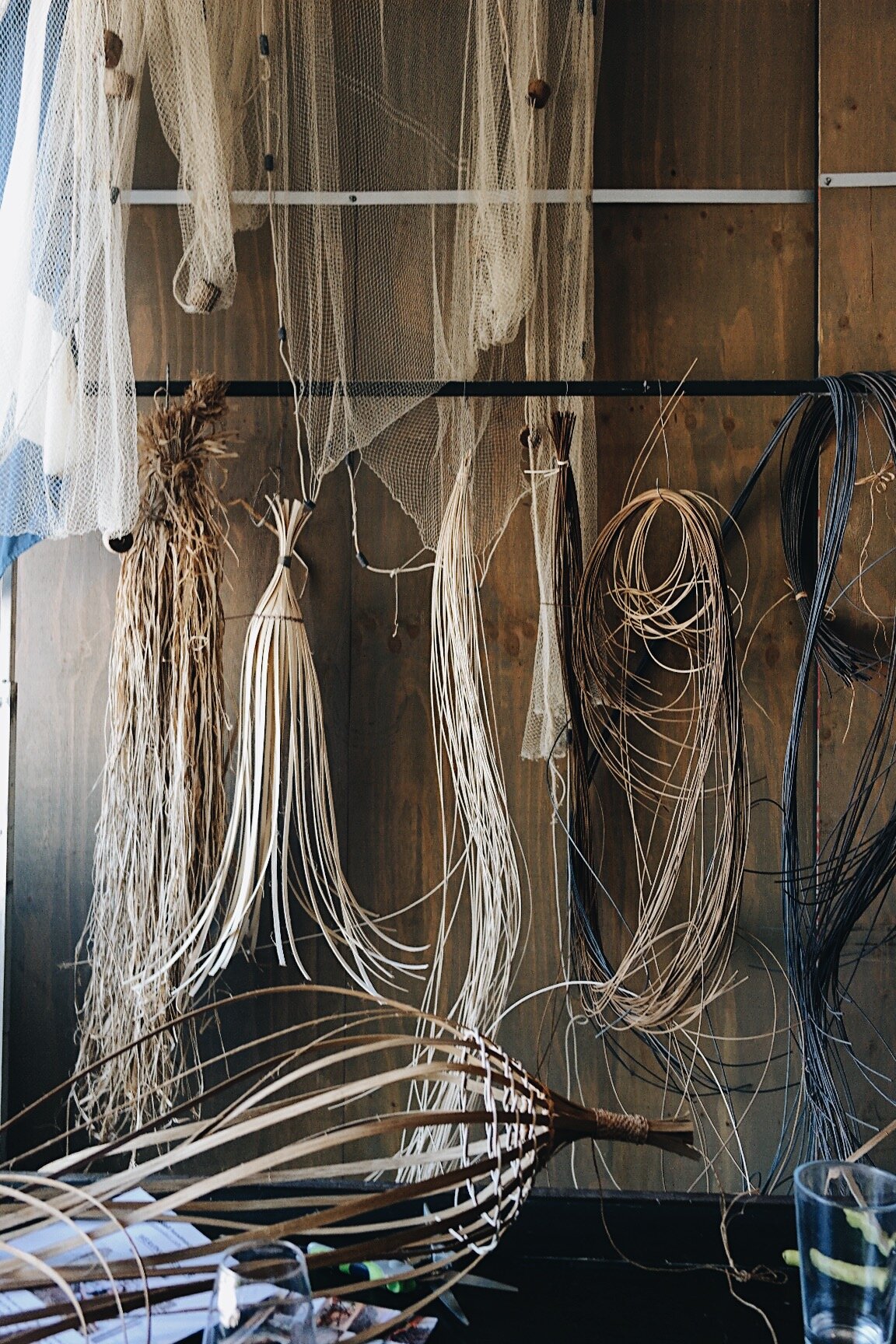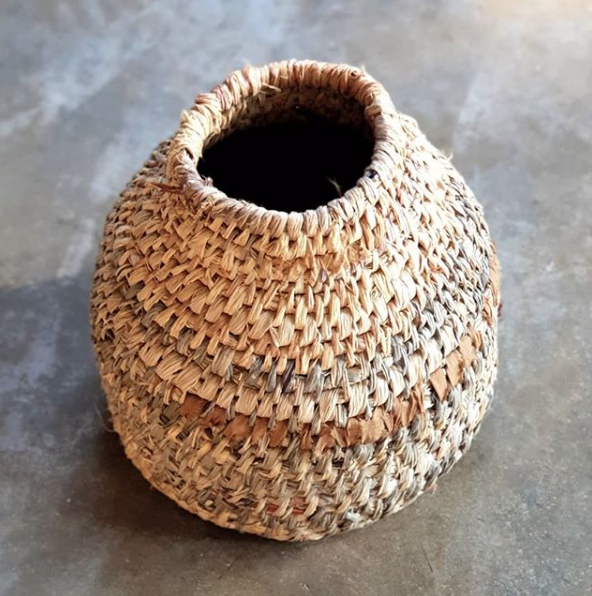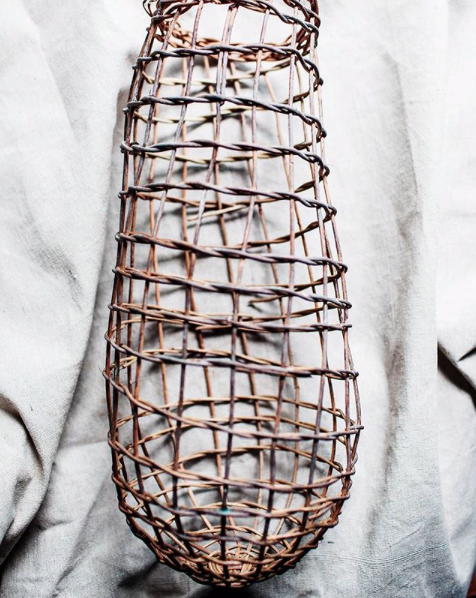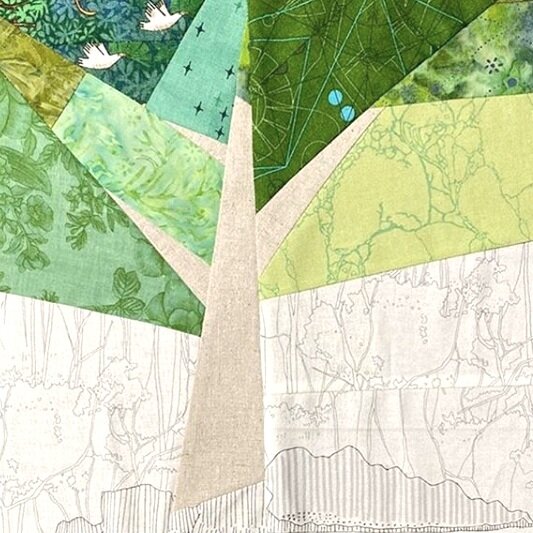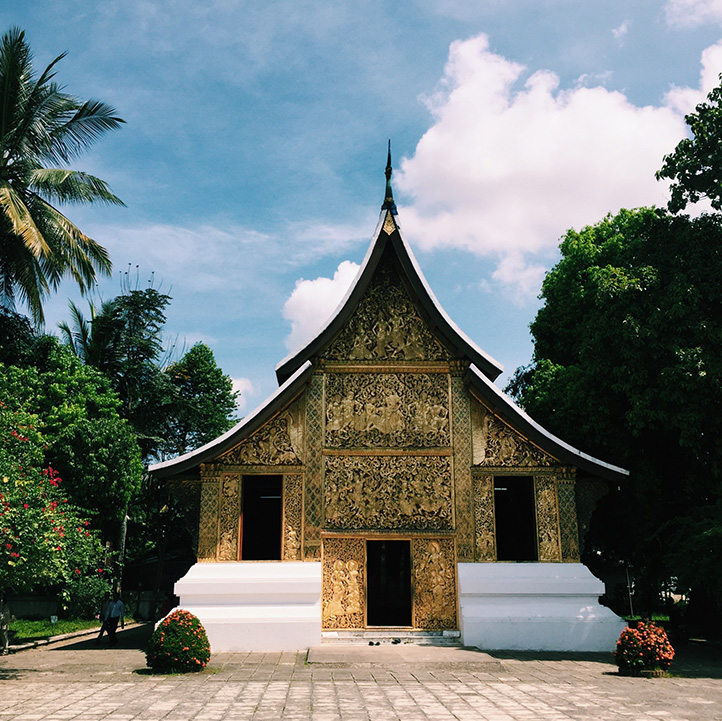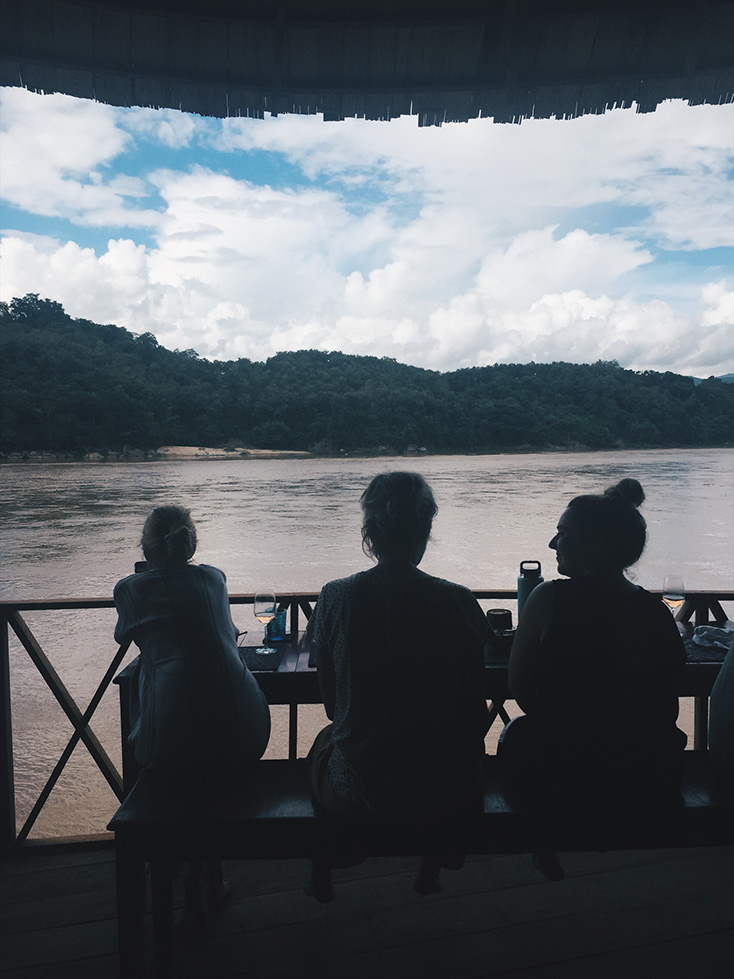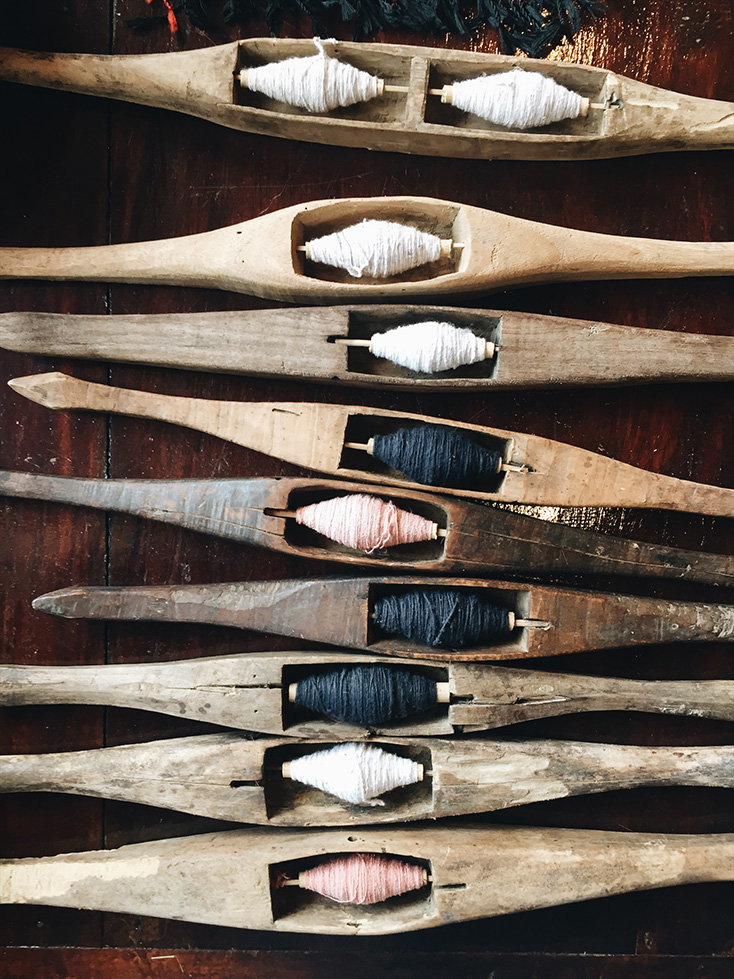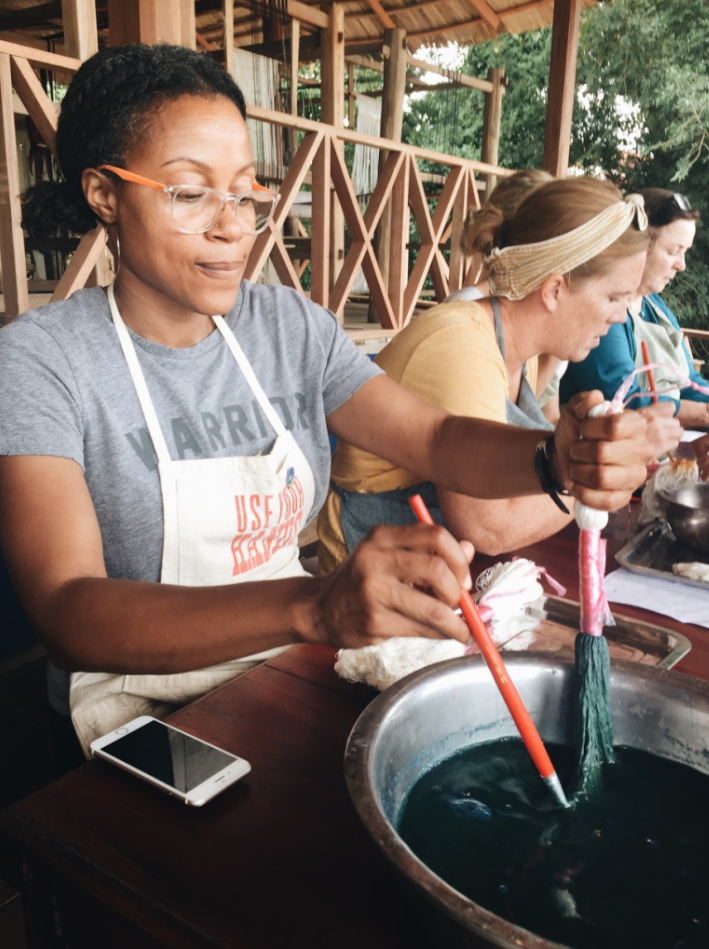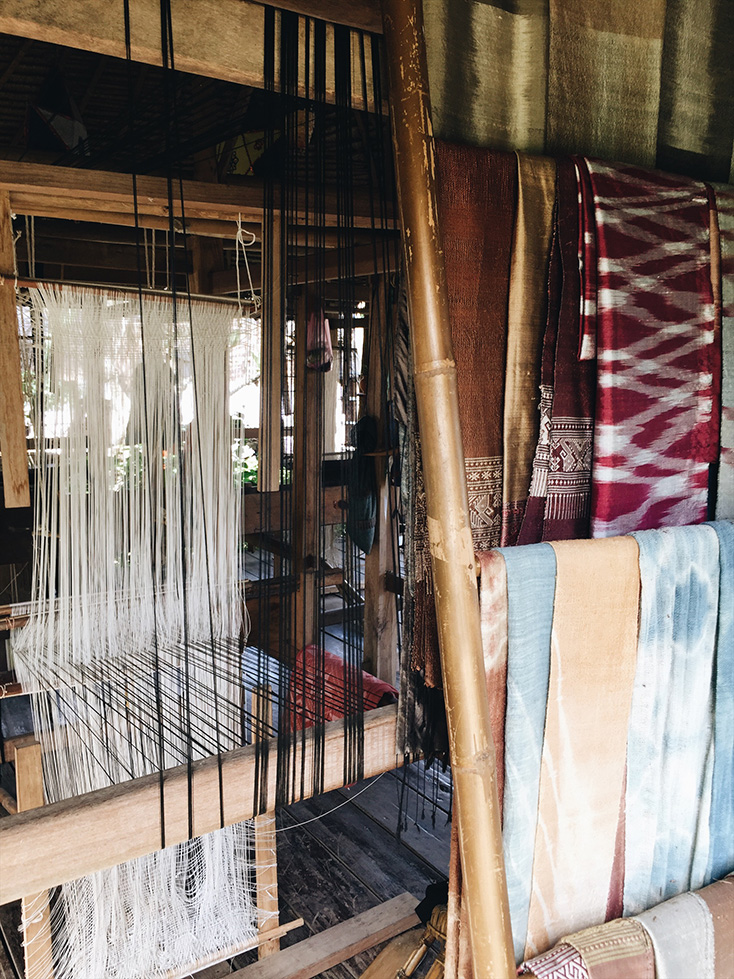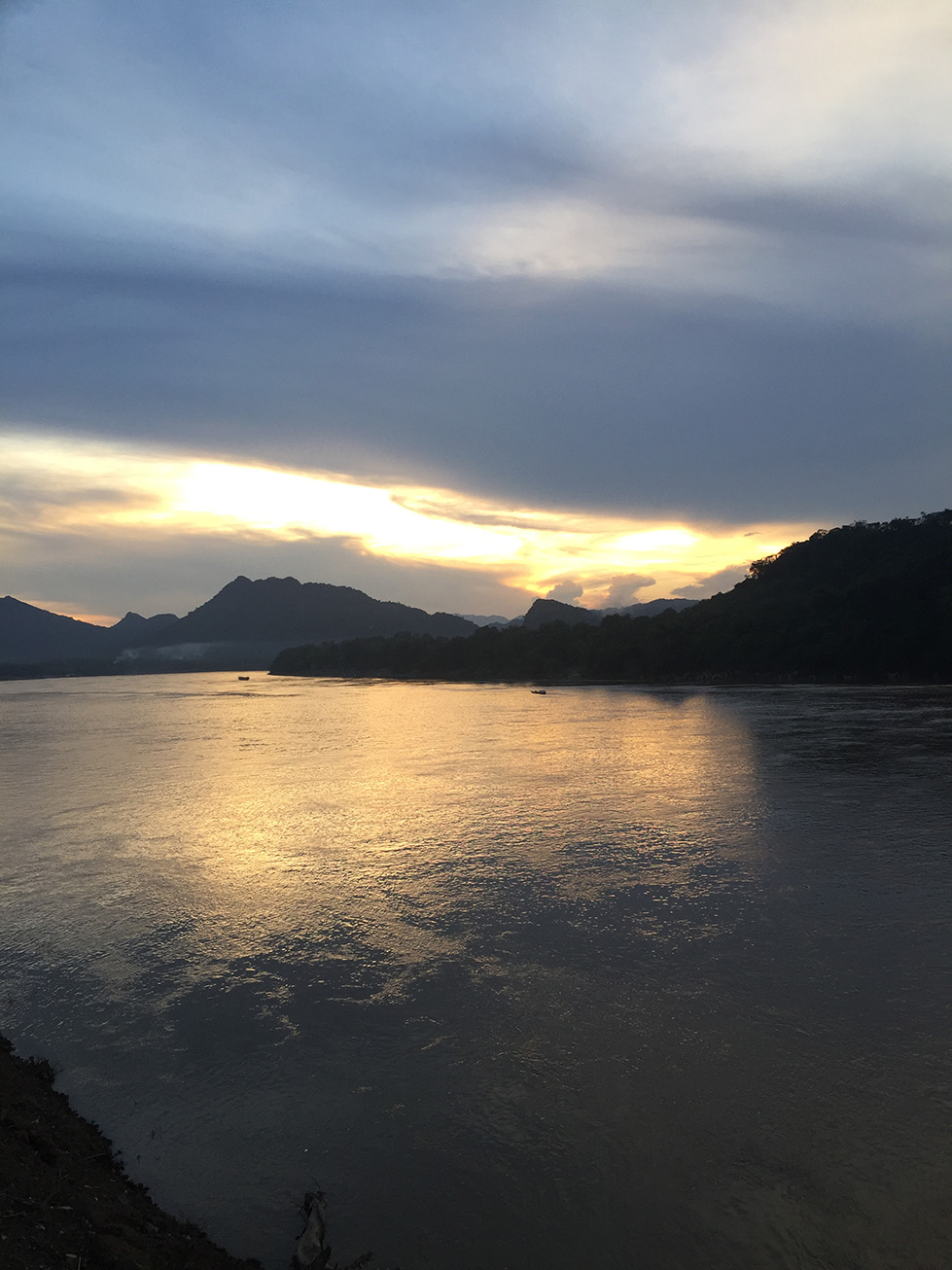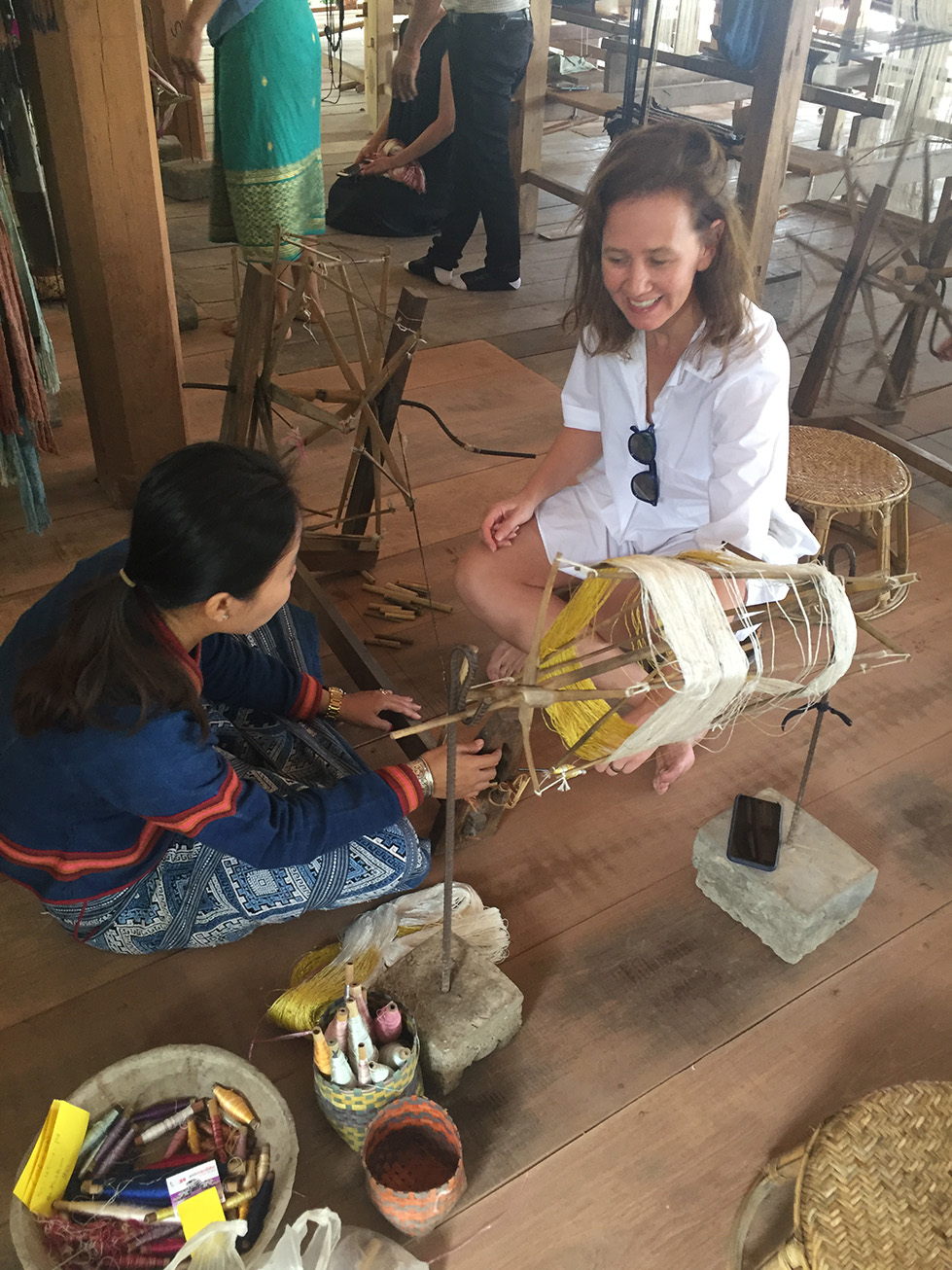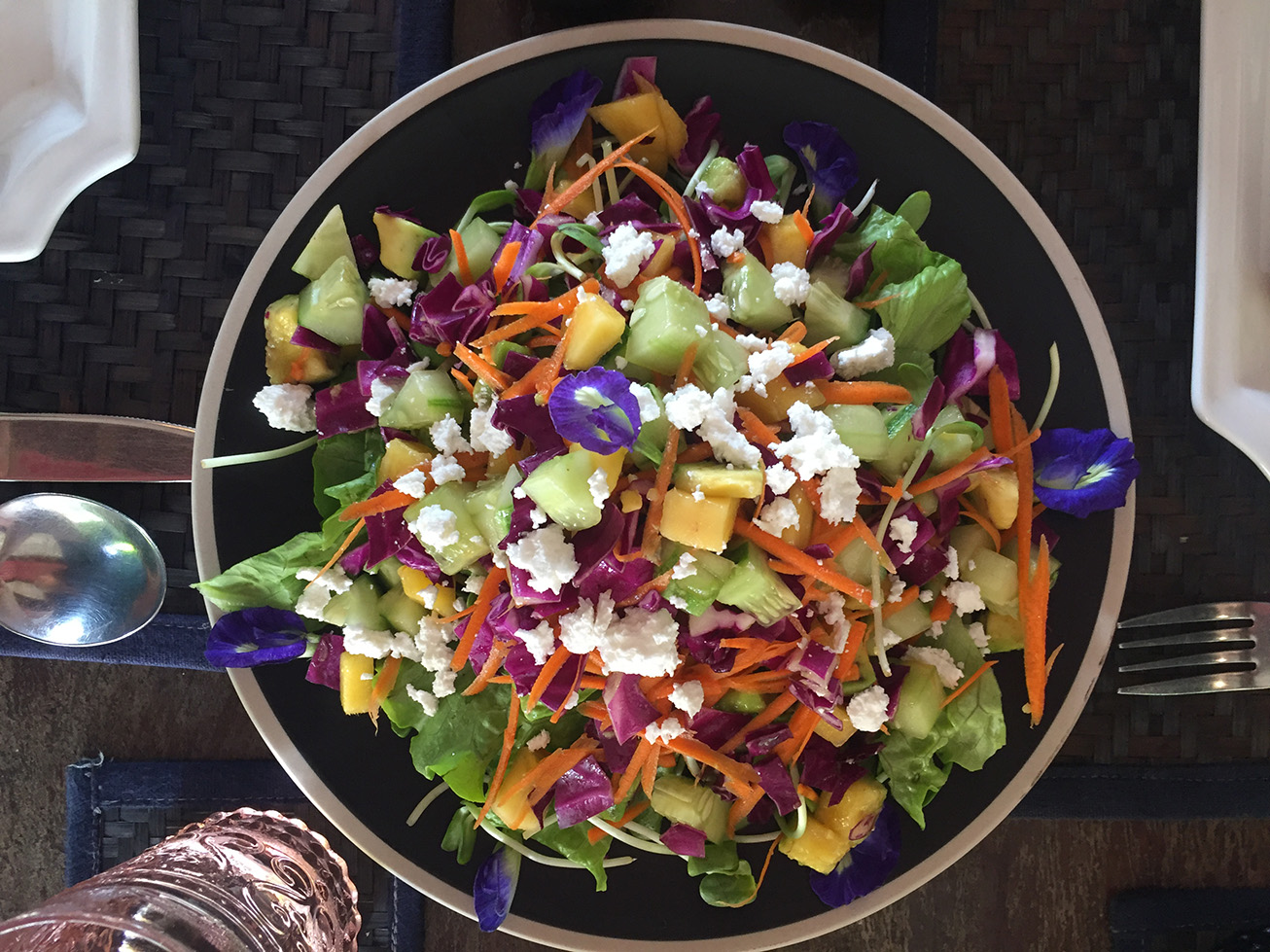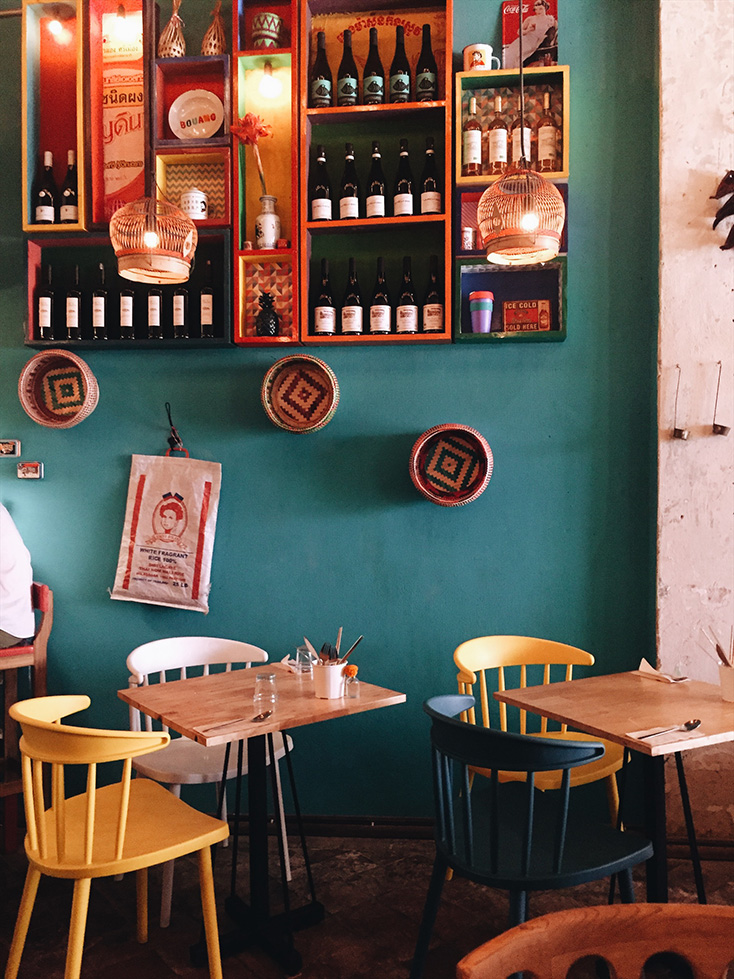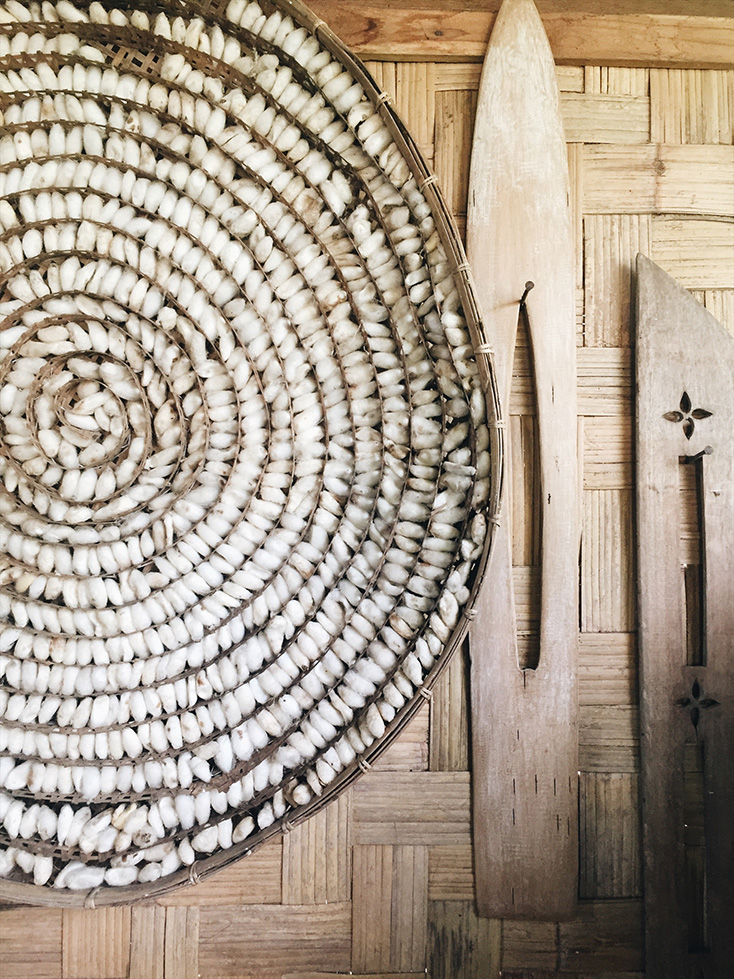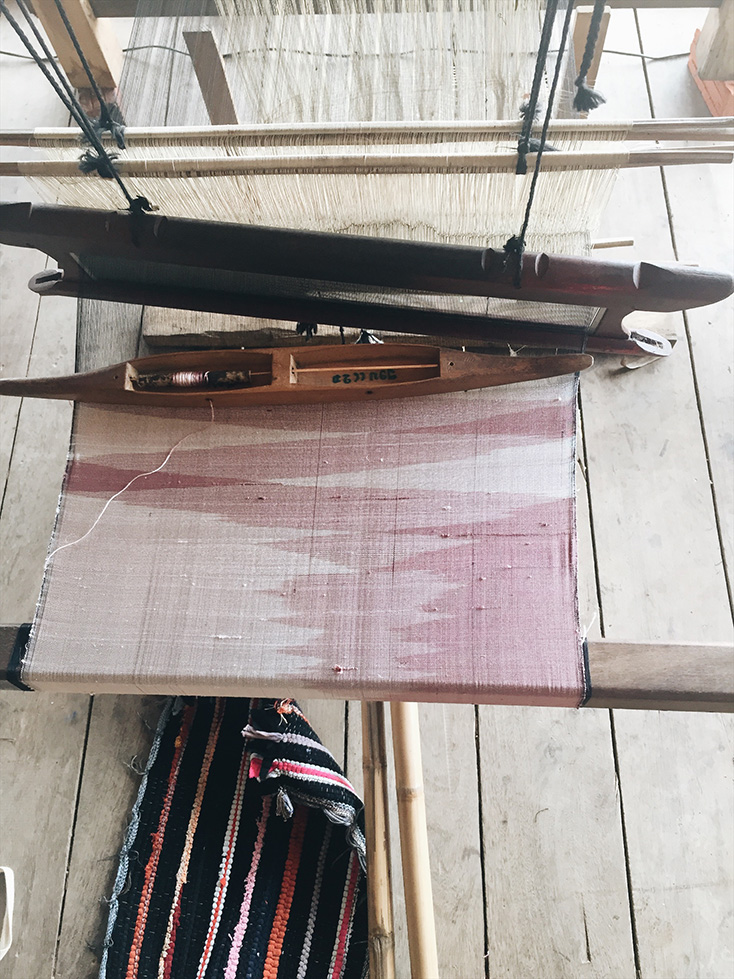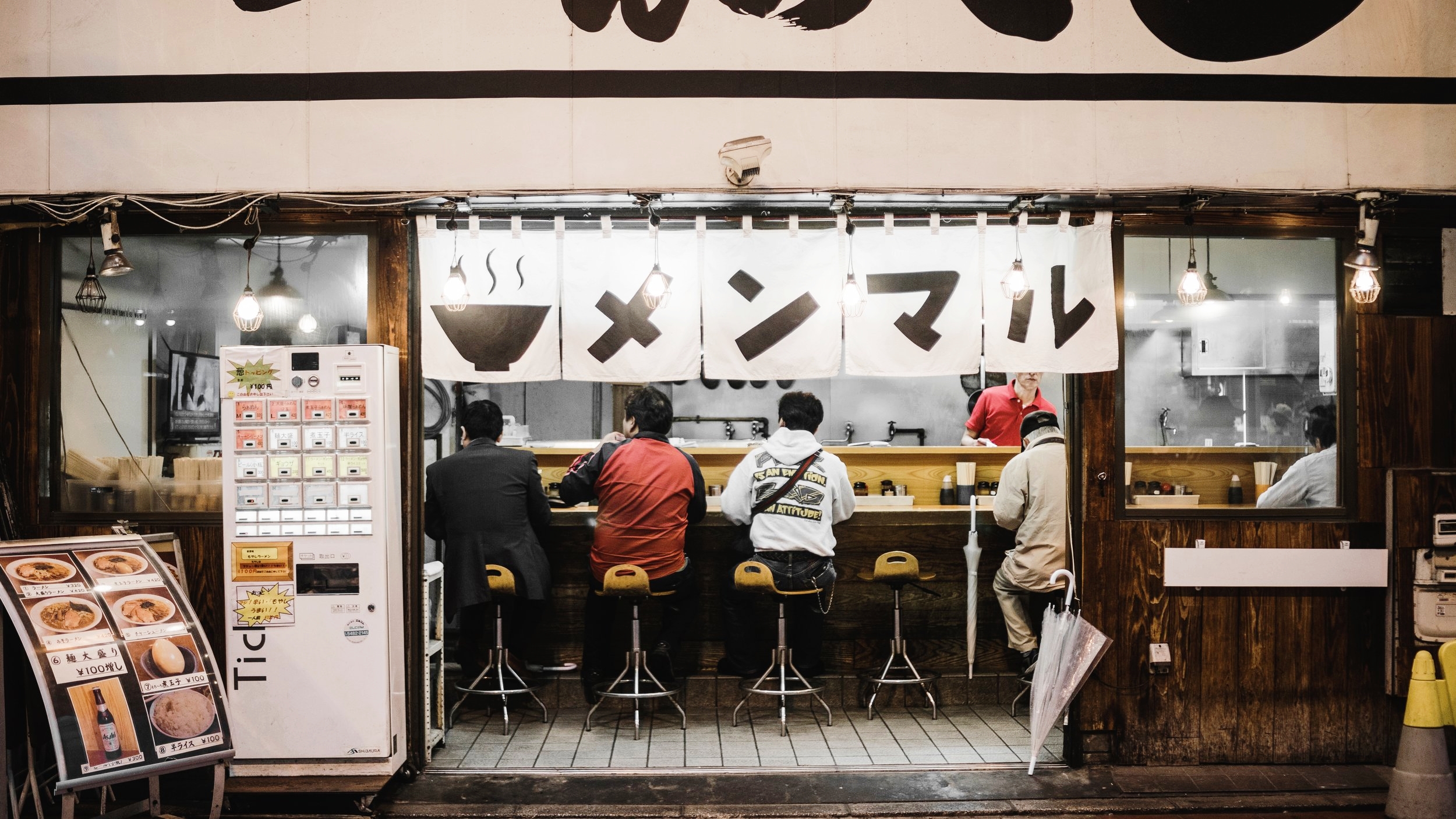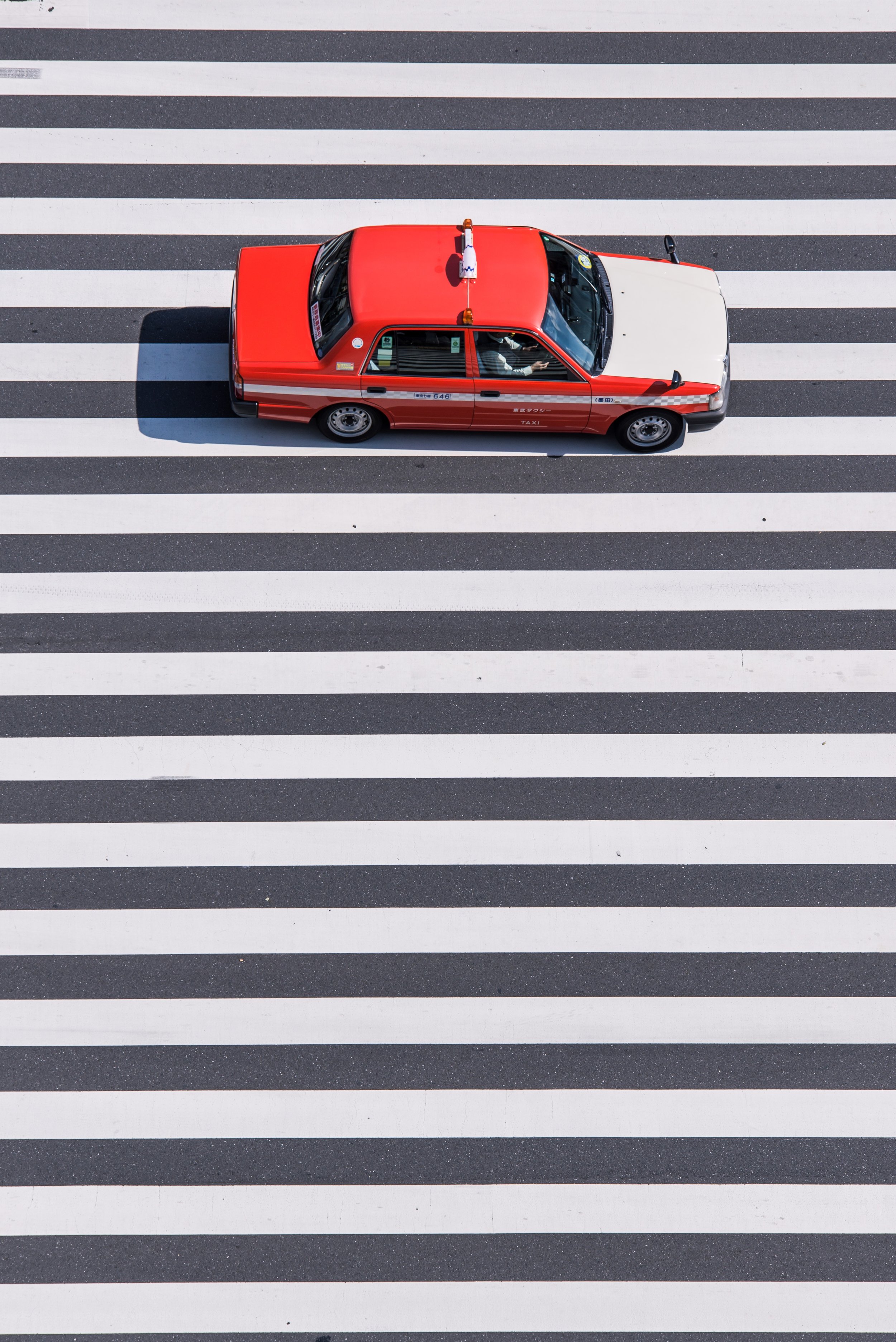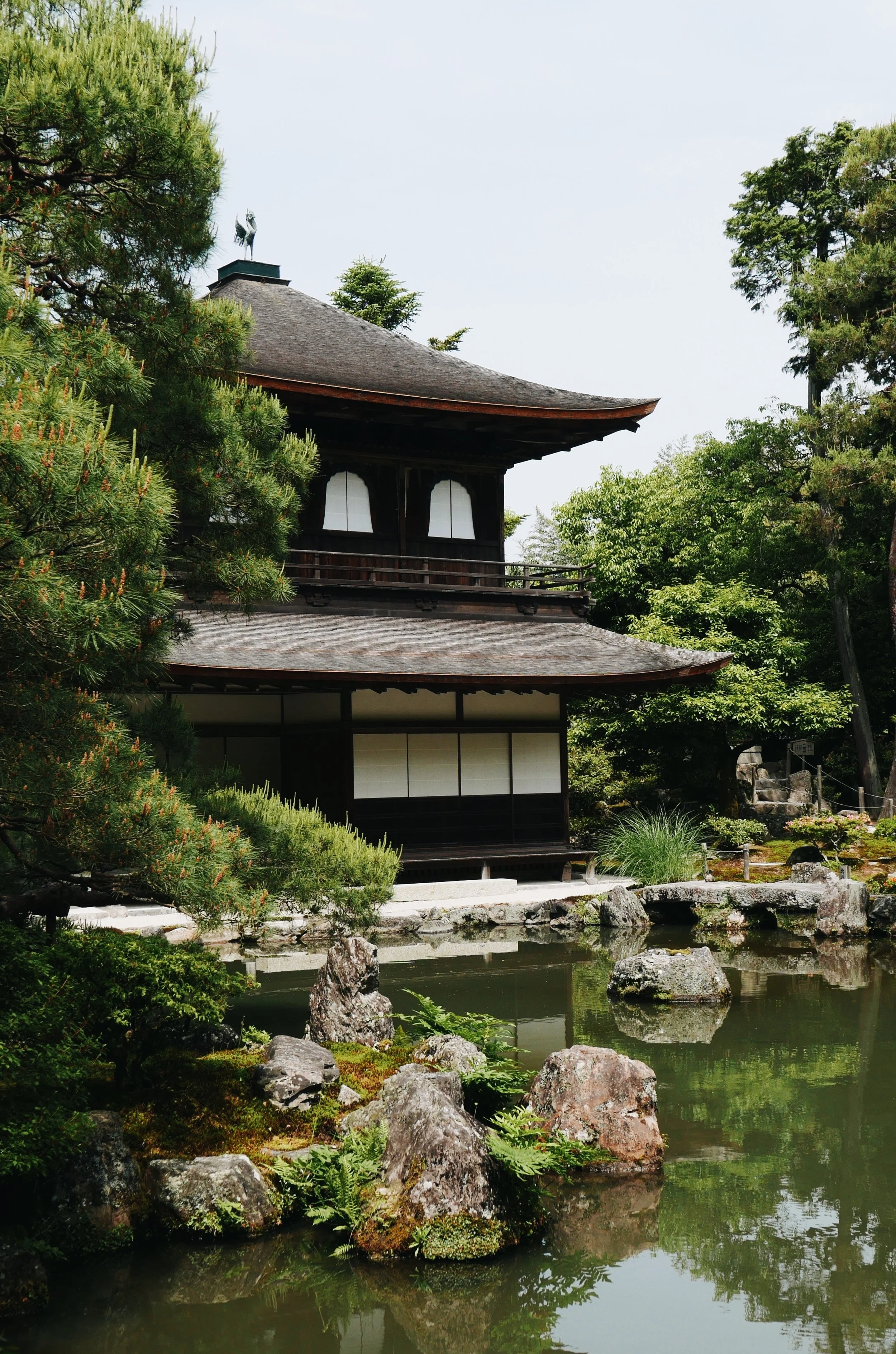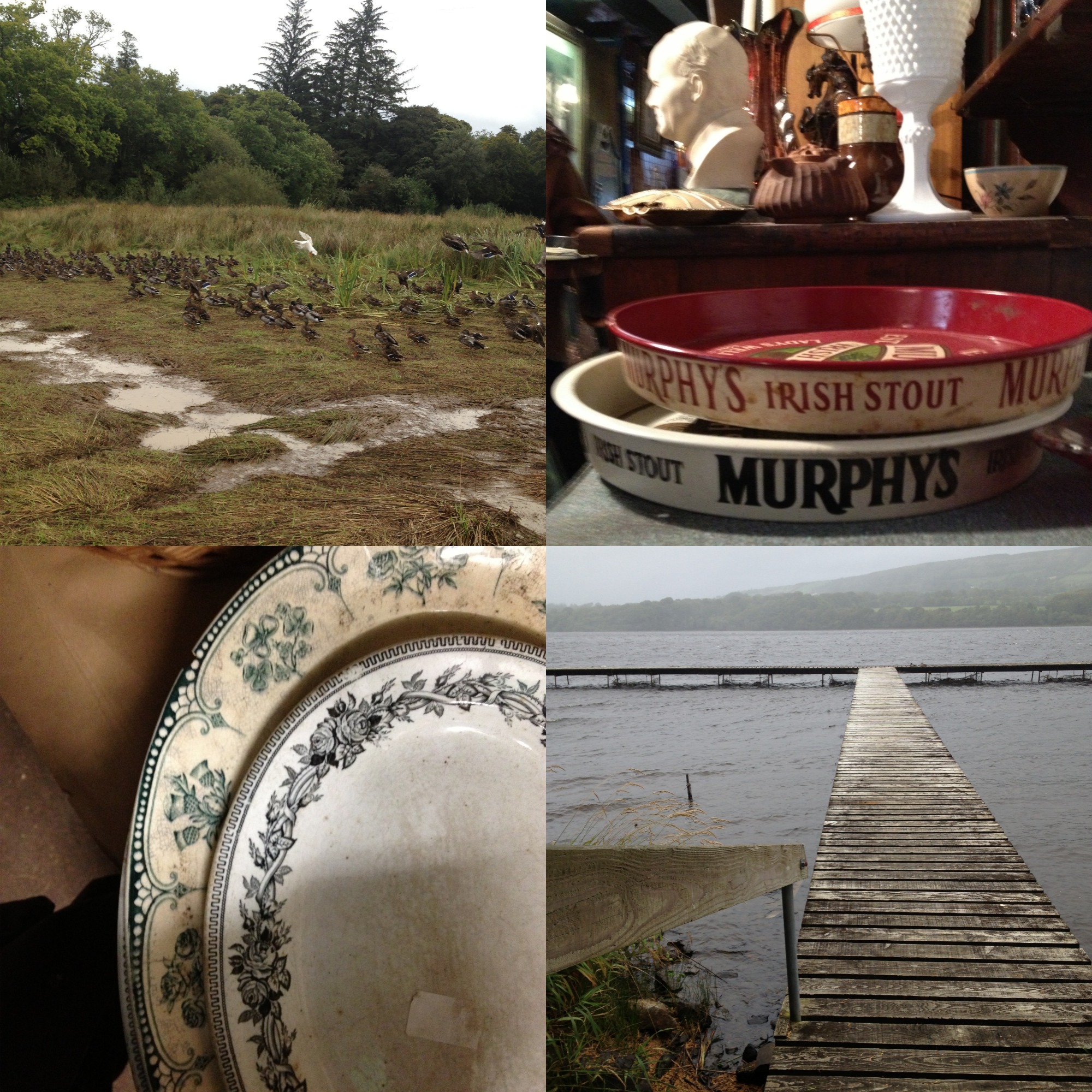Emiko Daviesis an Australian-Japanese food writer, photographer and cookbook author, based in Tuscany for the past 20 years.
Join Emiko this October on a trip to the gastronomic heart of Italy, as she sips and savors her way through this food lover’s paradise,
sharing recipes, hidden gems and her favorite local makers.
But first, let's get to know a little more about her.
FOOD + WINE Q & A
with
Emiko Davies
Emiko Davies is an Australian-Japanese food writer, photographer and cookbook author, based in Tuscany for the past 20 years.
Join Emiko this October on a trip to the gastronomic heart of Italy, as she sips and savors her way through this food lover’s paradise,
sharing recipes, hidden gems and her favorite local makers.
But first, let's get to know a little more about her.
You have cookbooks on Italian food and Japanese food, are there any commonalities you've found or cross over dishes you've created?
I find so many things are similar, even though they are a world apart. To begin with, look at the geography and shape of the countries — Italy is a peninsula surrounded by the sea and Japan is a long series of islands, surrounded also by the sea. Both are mountainous and volcanic, blessed with abundant seafood and a wonderful variety of high quality produce, thanks to their positions and their fertile soils.
My theory is that because their ingredients are so good, there is very little messing about with them and so the main similar thing about these two cuisines is that they are inherently simple — you just let the produce shine and enhance it with some deeply umami flavours.
Tell us a bit about your story and career path, how did you get to San Miniato?
I originally came to Florence to study etching the senior year of my Bachelor of Fine Art and I fell in love with the city. So I came back in 2005 to work for a year and study art restoration — but I soon met my husband Marco, I settled in and I never left. It felt like home. At a certain point I started writing a blog where I shared what Tuscan food was really about — food, words and photography have long been passions of mine — and I realized this is what I really loved doing. Things just took off from there!
I started writing cookbooks (my first cookbook came out in 2016, now I have written seven). Although Florence was my home for a long time, during lockdown we decided to move to San Miniato, Marco’s hometown, to be closer to his family and get out of touristy Florence and I have never looked back.
Here, we have been able to do things we could never have done in Florence, including owning a home and opening our own business (a wine bar and cooking school). We have a great community of producers and other like-minded food people, our kids can grow up in a town where they know everyone and where they feel safe. We love it.
Do you have any favorite ingredients or flavor profiles, that when you see them you automatically think, yes, I'm ordering that or at the market if you see it, you grab it?
Oh so many things — monks beard, a snappy, grassy spring vegetable that looks like how I imagine mermaid hair that comes from Emilia Romagna, delicious with garlic and chilli; wild strawberries that taste like candy; fresh borlotti or cannellini beans in the summer and early fall (their texture is incredible, something that you lose completely with dried or canned versions) and artichokes, both in the fall and the spring, I can never go past them!
You have a focus on natural wine. What is it about this type of wine that you find most interesting?
There are many reasons we champion natural wine, one being that we love to drink wine — but we don’t want to drink poison. For the same reason that we choose organic produce over conventional produce that has been sprayed with chemicals and we appreciate artisanal cheese over, say, Kraft sliced cheese, we also want that for what we drink.
What we personally look for in food and in wine is the same: as little fiddling around as possible. Unprocessed, little or no additives, always organic, possibly biodynamic, sustainable, made by people who are artisans, who care about the details and have a connection to the territory, to their plants and traditions. We find winemakers that put thought and care for the product and for the land into their bottles.
But we are also picky, of course, it has to be absolutely delicious and fault free, which unfortunately plenty of natural wine is not. I’d go as far to say as there are lots of bad natural wines out there that has given natural wine a bad name or a connotation of “funky”, which is not necessarily a good thing. We like this alternative definition of natural wine: Nothing is added and nothing is taken away.
Think of it this way, even an amateur cook can follow a recipe and it can turn out okay but to take an ingredient and make it shine and express itself fully, while doing as little as possible to it, you really need to know what you are doing and you need to do it well. And this is where potential quality comes from, along with the fruit itself — and starting with grapes that are organic or biodynamic and hand-picked are just the beginning.
You teach workshops all over Italy, what do you think is special about the food and wine from the Emilia Romagna region.
It’s undeniable that Emilia Romagna is the gastronomic heart of Italy, so for people who loves Italian cuisine and traditions as much as we do, exploring this region is a must. It’s the home of some of the best icons of Italian food — Parmesan cheese, prosciutto, culatello, balsamic vinegar, tortellini. There is so much to love!
It’s also the home state of many important food figures in Italy, which I think is no coincidence. Pellegrino Artusi, the “great-grandfather” of Italian cuisine and the author of Italy’s most famous cookbook, Science in the Kitchen and the Art of Eating Well, Marcella Hazan, the doyenne of Italian cuisine and Massimo Bottura, Italy’s most famous contemporary chef — to name a few — are all from here.
What are you most excited to teach or share on your trip to the Emilia Romagna?
I’m particularly excited about showing people some lesser known parts of Italy and lesser known foods, even — culatello for example. Here in Italy it is known as the “king of salumi” and is a precious Slow Food presidium but I think outside of Italy most people have never heard of it.
I love that this product is so strictly tied to the place where it was created, a place so close to the river Po and its swampy lands that it’s constantly surrounded by thick fog. This fog, that could have been a hinderance for curing and air drying meat, became such an important part of the process of making culatello that it is basically an ingredient.
Only 23 producers exist and only 8 that qualify for Slow Food. We will visit an incredible underground labyrinth of culatello in a centuries old farm run by one of the most talented chefs in Italy — it’s so special.
Are there any common mistakes you think people make when they visit Italy? Or things you think, oh, you're missing the best parts of Italy if you don't....
I think the most common mistake I see is when they tend to try to pack too much in and cover too much ground in a short amount of time — I get it, as an Australian we tend to think, oh a 2 hour drive away, that’s easy, but in Italy, visiting towns that are 2 hours apart is like visiting 2 totally different countries! Here, even the town 15 minutes away is a whole different place, with a unique personality and a unique dish that you can only get there. I think there is so much to get out of a slower way of traveling and spending more time in one area, getting to know one region, rather than trying to see the whole country in a handful of days.
If you are inspired to explore the Emilia-Romagna region in Italy with Emiko, join us this October.
Artist Q+A with Miesje Chafer
ARTIST Q & A
with Miesji Chafer
Miesje Chafer is an artist and designer who creates patterned contemporary beaded jewelry + textiles using bright, playful color palettes + curious geometric shapes.
Join Miesje to learn all about her approach to pattern design, color and beaded jewelry.
But first, let's get to know a little more about her.
Where did your interest in art and design come from?
A good question, considering my lack of interest in art at school! My mum is an artist and always encouraged me and my brothers to be creative and my parents often took us to art galleries as children. My grandmother taught me to knit at a very young age and I've always enjoyed messing around with different crafts and mediums. I honestly think it's a deep desire to make things that has pushed me forward, I struggle to sit and not have something to do with my hands. I love the notion that you can take a bunch of raw materials and form something completely new with them, something totally original that has come from the depths of your brain, I find that very exciting.
Tell us a bit about your story and career path.
My career path into making as been a little unorthodox, particularly as I didn't especially enjoy art at school. I actually trained as nurse, as after college I couldn't decide what I wanted to do and nursing seemed like a sensible choice. After a year of working as a nurse a friend and I took a year off to travel around the world and upon returning I felt the urge to do something creative. Completely randomly I signed up to a three-day screen printing course and that was it - I was completely hooked. I started screen printing on fabric and making a few simple products which I started selling at local fairs. Very quickly I was asked to do some wholesale for two very well known shops (I won't lie, I was completely overwhelmed by this but I got stuck in and did it anyway) and from there my business and practice has grown and developed to where it is today.
Designing the beaded jewellery came about as I wanted to to create a range of jewellery that reflected and complemented my textile work but I wasn't keen to use textiles as it didn't seem robust enough a medium. I stumbled upon the art of bead weaving and everything fell into place - it proved to be the perfect vehicle for my designs.
Who would you say your contemporary jewelry workshop is for?
This week is for anyone who has an interest in beading, an interest in colour and and interest in pattern design and who might be unclear about how to combine and work with those three elements to create a practical object.
Giving yourself time to be creative is really the greatest gift and I want participants to feel they have had the opportunity to learn practical and theoretical skills that can help them understand the design process.
Above all else though I want this retreat to be fun! Beading can be very meditative and is a wonderful way to allow your hands and mind to connect to find a little peace in this crazy world.
What techniques are you most excited to share and teach in Puglia?
All of them! But I think the process of taking an idea or design and transferring it into a wearable object is the part I am most looking forward to teaching. I think this is the process that people most often struggle with and probably the most difficult to explain. I am hoping to provide a productive and nurturing environment in which students can explore their ideas and create something they are really proud of.
What advice do you have for other artists?
Do the thing. Every opportunity you have to be making or creating - do it. Even if you percieve it to be 'bad' or not your best work it doesn't matter, all the work you make will eventually lead you onto creating work that is authentic and reflective of you as an artist. Also keep sketchbooks. Fill those guys up. You have no idea what you will look back on and use as inspiration in the future but if you don't keep sketchbooks or records of your creative experiments you will have nothing to look back on. And lastly, being creative is not a well lit path, no one else is mapping it out for you. Maybe the next step is illuminated but beyond that you have no idea what's coming and that's ok, you just have to trust the process.
Tell us about a favourite collaboration or project and what you’ve loved and learned from that?
This is not a recent project but I would say it had a huge influence on my work. A few years ago I was employed by textile artist Alice Kettle to work on the 'Stitch a Tree' project. We asked the public to submit small embroidered trees which we then stitched onto a large wall hanging. The project was to raise awareness of the plight of refugees and displaced people across the world and ended up turning into a massive piece of work (72 square metres!) which was displayed in the Whitworth gallery in Manchester. Up until that point I hadn't done any embroidery, but it went on to become an important part of my practice. I would now say that hand stitching is the skill that I love the most (to do and to teach) and will hopefully continue to inform the way I work for years to come.
What did I not ask you that you wish I had asked?
Why are craft and making so important?
For a long time I think the notions of crafting and making were seen as the poor relations of the art world, often considered women's work and not of any financial, political or societal value. Recently though there has been a shift towards recogising the enormous value in these crafting traditions, especially at a time when AI and digital creation seems to be replacing the need for humans and human interaction.
When we create something with our hands it feels like a tiny act of rebellion, especially when we work in close proximity to others. Making is a universally unifying experience and one that I think is very important to protect and nurture, especially at a time when the world is becoming an increasingly more disparate and difficult place to inhabit.
Artist Q+A with Jen Smith of Jen Ann Handmade
ARTIST Q & A
With Jen Smith
of Jen Ann Handmade
Jen Smith of Jen Ann Handmade is a fiber artist who creates striking, multi-layered compositions using rich, bold colors with a unique approach to mark-making leveraging a wide spectrum of fibers.
Join Jen this May in Évora, Portugal to learn all about her approach to fiber collage with weaving, embroidery, and beading techniques.
But first, let's get to know a little more about her..
How did you make the transition from a more business-oriented career to a more creative career with Jen Ann Handmade?
After several years living and working in Santa Monica, California, my boyfriend and I had a chance to move an hour north of LA to a ranch in a beautiful remote canyon. I had a lot of conflicted emotions because I loved living in Santa Monica, but this was an opportunity we saw as a necessary step forward, so we packed up and made the move.
Shortly after moving, I saw an embroidery pattern that appealed to me while scrolling through Etsy. It struck me as something fun to do to occupy my time in my new quieter, rural life. All it took was completing one pattern, and I was hooked. That led to me designing and selling my own patterns. From there, it snowballed to where I am now. What started as a creative outlet–a way to be productive with a lot more quiet time–ended up becoming an unexpected new path. And here we are.
What else or who else has had a strong influence on your work?
There are many amazing fiber artists I love. Sheila Hicks (@hastingshicks on Instagram) is a big, big one. She’s had a significant career, and you can see her influence and techniques in the work of many artists.
One of my very first embroidery loves was Danielle Clough (@fiance_knowles on Instagram). Her work is colorful, unusual and distinctive and always stops me in my tracks. You don't see anyone else doing anything like she does. I also love Katrina Sánchez (@fiberess on Instagram). She uses knitting, weaving and knots as part of her process, and again, her work is super distinctive.
I really admire artists who throw out the rules and use that to find their own voice. I love the work of Lisa Smirnova (@lisa_smirnova on Instagram). She embroiders. She does amazing paintings. She paints on clothing. She just has such a distinct and unique voice and brings something truly different to her work.
Tell us about your childhood and how that has influenced you becoming Jen Ann Handmade.
My mom was a home economics major in college so my brothers and I were raised baking, cooking, sewing, cross stitching, and crafting–it was just part of our family ethos. My mom was really keen on us collaborating and making homemade gifts for people during the holiday season. She taught us to add personal touches to make special things that were not only gifts but would become treasured keepsakes.
My father is a photographer focused mostly on sports photography and nature photography. I went to lots of sporting events with him growing up, and it really stuck with me how he looked for and captured special moments.
You have done a lot of really fun collaborations and commissions in your time as an artist. How do these usually come to you? What have you loved and learned from different commissions?
Your work is very color forward. How did you learn color theory and how did you develop your overall approach to color?
I have no formal training in color theory. I didn’t go to art school. But I know what gets my heart. When I first started using embroidery patterns, I would often go to the store for the recommended colors, but would find myself wanting to adjust some of them and “turn them up to 11.” Instead of sticking with a neutral, I’d swap it out for hot pink. Changing up color and introducing brighter hues really inspired me.
In my daily life, I’m constantly on the look out for color palettes in unexpected places. I respond to groups of colors and like to capture them and revisit them when the right project comes up. I might see a cobalt blue with an unexpected color, and I’ll photograph or screenshot it for future reference because I’ll know it’s something I want to explore later.
When you think about how you plan your pieces, how does color factor into your process and planning?
I always start with color and texture. With my recent pom pieces, I’ve been starting out by making a few poms in a variety of colors and textures. They serve as a paint palette for me, and I like to start this way because it’s pretty low entry. I can take what I would probably consider a pretty wild and crazy combination of colors and quickly see how they work together. Then I can ask myself questions: Do I want to lean into one color or make this more multi-colored? Do I have enough texture? Does it need more white, cream, or negative space? Sometimes I incorporate macrame cord because it’s neutral in color, but it also has a bulky and wild texture compared to yarn. So yeah, I try to start with a set of materials that have a good mixture of color and texture, then let it evolve from there.
To date, as far as I know all of my commissions have come through Instagram, and I’ve done a lot of commissions that have been really fun. I did a few book cover recreations for Random House, Penguin, and Double Day. For those commissions, they asked several artists to recreate the cover art in their chosen medium as part of a cover reveal. Working on those projects showed me there's an aspect of my personality that really likes to work within set parameters, but having complete freedom within those parameters. So I love a bit of boundary, but then I also love having the freedom to go a bit crazy. It keeps me a little bit more focused, I guess.
Those pieces are some of the pieces I'm most proud of because they were very detailed and they needed to look like the cover. So, I didn't have flexibility there. With embroidery, it can be challenging to get enough detail into the work. That’s actually where I started incorporating beading into the work–I wanted the twinkle in the eye or something to bring an aspect of the cover to life and make it a little bit more three dimensional and detailed.
I did my first big pom pom commission last Fall and again it started with a set of boundaries–in this case a set palette of colors. But I had the freedom to do whatever else I wanted to do.
It's also freeing in a way to know a piece is already spoken for. I can go all in and not have any of the self-doubt that sometimes happens, wondering if someone will like a piece enough to buy it. When a client trusts my vision and instinct, it allows me to work in a way where I don’t feel like I’m compromising anything.
How much of your artistic process is planned and how much is driven by intuition?
I usually have some sort of a loose plan when I start a new piece and it always turns out that the finished piece is almost nothing like what I had originally started off with! As I’ve grown and become more confident in my work, I’ve learned to leave room for playfulness–to pivot and integrate something completely unexpected.
What is the most surprising thing you’ve learned from being an artist?
One of the happiest surprises is the strong, supportive online community among artists. Sometimes I question myself and wonder if something is too wild or too crazy, but when I put myself out there and an artist I respect shows kindness and support, it’s truly amazing. I feel like I've created some genuine friendships with people that I've literally never met who I respect so much.
What advice do you have for other artists?
Take the time to be playful. Playfulness is key to my process and who I am as an artist. I find it to be really, really important to keep my art-making process interesting and whimsical. It’s definitely important to go deep enough into a technique to become good at it, I also find myself drawn to learning new things and adding experiments to my work. I think that sense of play is one of the most crucial parts of my work. It's important for me to see evolution in my work.
If you are inspired to explore Évora, Portugal and learn with Jen Ann Handmade, here is your chance.
Join us by clicking below.
Ace Camps Travel Welcomes New Owners
Ace Camps Travel Welcomes New Owners:
Tanya Staples and Vida Forrest y Salazar
Why does Ace Camps Travel have new owners?
Before losing her brave and determined journey with cancer, our founder, Angela Ritchie, was in the process of selling Ace Camps Travel to new owners. Being the consummate planner she was, she wanted to ensure the vision, experiences, and community she built would continue to grow and thrive for years to come. Together with the Ace Camps Travel team, Angela made the decision to transition ownership to Vida and Tanya.
Tanya and Vida have worked together for more than a decade at lynda.com and LinkedIn. They share a passion for travel, a love for education, and can usually be found nerding out over various creative endeavors, often involving a shared love of neon colors.
Tanya met Angela and Jessica Stuart-Crump, our Director of Trip Design, on an Ace Camps Travel trip to Laos in 2018. She fell in love with the concept and community of Ace Camps Travel, leading her to join several other trips. Vida recently took a year-long career break to travel the world, visiting local artisans and traditional handicrafts along the way. Angela felt their combined passions and experiences were the right fit to honor her original vision and lead Ace Camps Travel into the future.
A Hello from Vida and Tanya
Hello fellow travelers and creatives!
Honored and excited doesn’t begin to describe how we feel about joining the Ace Camps Travel team. We met over a decade ago and through the years, our friendship deepened as we discovered our mutual love of travel, food, culture, and art. Whether it was block printing together in Colorado or tile painting in Portugal, we found inspiration and connection exploring the world and enjoying creative experiences together.
When the opportunity arose to work with Angela on transitioning the company into its next phase, we felt an enormous sense of gratitude to become a permanent part of the Ace Camps Travel team. We love how Ace Camps Travel brings artists and travelers together, creating the perfect environment for inspiration to strike, creativity to flow, and connections to bloom.
We feel incredibly fortunate to have found this intersection of our skills, passions, and experience, while being able to honor Angela’s incredible legacy and vision. We look forward to partnering with all of you as we embark on this new adventure together.
What can you expect from the transition?
We’re sure you’re wondering what you can expect with this ownership transition. We fell in love with all the things that make Ace Camps Travel special and we don’t plan on changing any of that. You can expect more amazing trips featuring unique destinations, talented artists, and inspiring experiences, all crafted with the same care and attention to detail you’ve come to know and love. If you’d like more information or have specific questions, check out our Transition FAQs or reach out to us at hello@acecampstravel.com.
We encourage you to say hello, share ideas, or drop us a note anytime at vida@acecampstravel.com and tanya@acecampstravel.com.
We look forward to meeting you all and seeing you on an Ace Camps Travel trip sometime soon!
Vida, Tanya, and the Ace Camps Travel Team
A RECIPE FOR TRAVEL no.1: Masala Beans on Toast
Funny the foods you feel like eating these days. Maybe it’s thinking about my Ace Camp trips to Jaipur, India where we ate beans on toast on the rooftop of @tapri_theteahouse, after an early morning walk around Jaipur’s Central Park. We are thinking of all of our friends in Jaipur, too. Tapri Teahouse takes beans on toast to another level with caramelized onions and garlic, garam masala, cumin, chili, and cheese. The recipe below is cheese-free, for a vegan version!
MASALA BEANS ON TOAST by Chef Alison Bell
Servings: 2-4
Prep time: 5 minutes
Total time: 20 minutes
1 can of beans in tomato sauce
1/2 medium onion, finely diced
1 clove garlic, minced
1/4 tsp garam masala
1/2 tsp ground cumin
1/4 tsp chil powder
1 tbsp(ish) tomato paste
Salt and pepper to taste.
Cilantro for garnish
Sauté the onions and garlic in oil until lightly caramelized. Add the spices and cook briefly. Add the tomato paste and beans. Heat through. Season with salt and pepper to taste. Serve on your favourite toast and garnish with cilantro.
Tapri Teahouse’s version of beans on toast shown here. Optional final step: Layer beans mixture on bread sprinkle cheese on top and toast all together for a deluxe treat!
UPDATE! AUSTRALIA BUSHFIRE QUILT PROJECT
An uplifting moment that we all need right now.
In January, we put a call out to see who could help with @wollongongmqg ‘s quilt block project in their quest to make quilts for wildfire-affected families within their communities.
And our community responded, THANK YOU. Because of your generosity + creative minds we were able to collect and send over a 1000 quilt blocks to Australia.
Head over to @wollongongmqg ‘s feed to take a look at some of the quilts they have started to make with your blocks.
Thank you to each and every one of you who took the time to contribute to this project.
Photos c/o
@clothandprint
+ Rural Art Network South Africa
Huge thanks to the following people for your help making this happen:
Austin Modern Quilt Guild @austinmqg
Nelson Stitch Lab @nelson_stitch_lab
Tara Glastonbury @stitchandyarn
Megan Smith @clothandprint
A letter from Angela
Editor’s Note: Our beloved founder, Angela Ritchie, passed away in April 2024 following a brave and determined journey with cancer. Angela was an inspirational force who taught all of us so much and her wish was for Ace Camps to grow and thrive for years to come. Please find below a letter from Angela sharing her thoughts on Ace Camps in 2020.
Hi - I’m Angela Ritchie, the Founder, and Director of Ace Camps Travel Company.
As many of you know, Ace Camps Travel is much more than a business for me. From the first time I helped to organize workshops in Whistler, Canada I learned that when people come together as solo travelers or with friends, a special bond is created. As time passed, our trips and workshops grew and our itineraries expanded to include offerings all over the world. Ace Camps gave everyone a chance to spend time with someone they admired, to learn from other guests, to be introduced to the people and cultures of other countries and to learn a skill. Connecting people - This is my passion.
Someone once said to me, “It’s not all about the art, Angela” meaning these experiences were not just to increase one’s knowledge in creative learning but learning in many ways. Our experiences taught us a way to learn about others both attending the trip and those who we encountered and collaborated with along the way.
We have developed a community that is woven together, a community where friendships and supportive relationships have developed. This is what happens when you are experiencing completely new environments together. The tiniest occurrences that happen when traveling can reveal the most valuable memories and emotional connections.
When what we come to know as the most important parts of our lives change in a flash, we are reminded that poetry can help us to cope with new realities and think about the unknowns ahead. Words can be calming, humous, inspirational and can bring us together in ways that show us we are similar and share the same emotions. The opening line of the poem, “If You Get There Before I Do”, by Dick Allen is “Air out the linens, unlatch the shutters on the eastern side, and maybe find that deck of Bicycle cards lost near the sofa” brings a sense of calm, allowing one to notice the light, slow down, hear and see and touch the real world and leaves us with future possibilities of gathering together.
Poetry and travel are simply two different modes of exploring the world, of learning who we are, what we believe and how it all fits together. With words, we can share our vulnerabilities, scars and our strengths. Some of you are baking bread, some of us are planting seeds - maybe it's a growth thing, the yeast, the seeds in my little pots that I check on each morning. The reality is that, while most of the world might be on pause right now, our lives are still happening.
Here at Ace Camps, we are working behind the scenes to continue organizing, developing + creating the greatest learning adventures all over this amazing world. We are really looking forward to seeing our past guests again and to meeting those of you that will be joining us for the first time.
Take care + keep in touch,
Angela
Artist Q+A - Discover Basket Weaving with Harriet Goodall
Harriet Goodall is a sculptor and basketmaker who explores the intersection of traditional craft with art and design.
Join Harriet this October in Puglia, Italy to learn all about contemporary basket weaving techniques. But first, let's get to know a little more about her.
I love responding to found and natural materials by listening to what they want to become next.
Currently I am inspired by weaving through all the burnt and oxidized metals left after the fires in Australia.
I try to keep my focus in the present and my favourite is whatever I am working on so.. right now in the studio I am making a huge woven wall piece shaped somewhat like a wave or a seed to go on a dividing wall in a beach house in Mermaid Beach, Queensland and a series of wall sculptures for a small group exhibition in Melbourne called Australia: Living Land at Otomys Contemporary.
In my work I look to the colours and marks made in nature, the layers in landscape and the cycle of life.
I am always trying to find ways to make my art using reclaimed materials and tread lightly on the earth. I am inspired by all the women who have come before me using their hands and hearts to survive.
I love teaching contemporary free-form random weaving and it was the technique that got me hooked on basketry in the first place. Witnessing the moment when everyone starts to let go of perfection and flow in their weaving is always beautiful.
Traditional indigenous fibre artefacts in museums and contemporary artists and sculptors breaking boundaries and working with new materials.
I could name a hundred! but if I had to name just a few .. Rosalie Gasgoyne, Eva Hesse, Ruth Asawa, Martin Puryear, Roy Wiggan, Hiroyuki Hamada and currently I am a fan of Mimi Jung who is based in LA. They are all fibre sculptors with a minimalist natural material or restricted colour palette focussing on shape.
If you are inspired to explore Italy and learn with Harriet here is your chance.
Join us by clicking below
5 Reasons YOU should join Ace Camps in eSwatini
Our top 5 Reasons you should travel to eSwatini (Swaziland) with Ace Camps.
We're heading to the the incredible Kingdom of eSwatini + South Africa!
August 14 - 25, 2022
WHY VISIT ESWATINI?
Lonely Planet has just named eSwatini (formerly Swaziland) one of the top 5 countries to visit in 2020. Come with us and see why! We will explore the art of Batik Wax Printing, Natural Fibre Weaving, Markets, Textiles, Baskets and Safari in Kruger National Park + more!
Here are our top 5 reasons to join us on this adventure!
NO 1.
THE CRAFTS OF eSWATINI
eSwatini has a remarkably impressive range of traditional arts and crafts with many of its products now found in top homeware stores + boutiques around world. On this trip you will visit many craft ateliers with a focus on hand woven baskets, stunning glassware, beautiful batiks + naturally dyed woven goods – all uniquely Swazi.
NO 2.
LOCAL WILDLIFE
The diversity, density and sheer numbers of animals is almost unparalleled, and all of Africa's iconic safari species – elephant, lion, leopard, cheetah, rhino, buffalo, giraffe, hippo and zebra – live out their dramatic days here, along with a supporting cast of 137 other mammals and over 500 varieties of birds.
NO 3.
WORKING WITH CRAFT ARTISANS
During this Ace Camp you will have a very special opportunity to work hands-on with local women's cooperatives comprised of skilled artisans. You will learn from them and produce your own printed and woven textiles. All workshops are open to beginners.
NO 4.
ENDLESS LANDSCAPE
eSwatini is a country of magnificent mountain scenery with rivers, waterfalls and gorges; unique rock formations which are among the world’s most ancient; lush and fertile valleys, plus typical African bush and unique local architecture.
NO 5.
COMMUNITY ENGAGEMENT
With thanks to the generosity of our 2019 guests, we were able to support and organize new eyeglasses for an entire team of local artisans. This effort has made a significant impact in the lives of the women, given the detail of their work. In addition, Ace Camps's eSwatini travel partner actively supports both local communities and wildlife & environmental conservation projects.
AUSTRALIA BUSHFIRE QUILT PROJECT
WE NEED YOUR HELP! Can you lend your creativity to a project to support families affected by Australian Bushfires.
Australia has suffered enormous losses. Months of severe drought mean that bushfires have been ravaging the country since September. To date, over 15 million hectares of bush, forest, and parkland have burned.
Families have lost loved ones, others have lost their homes and all their belongings. Not to mention the extensive loss and damage to native flora and fauna. Unfortunately, it is only the start of the fire season and forecasts predict worsening conditions, and anticipate further loss and destruction. Thousands are currently seeking shelter, forced out of their homes with little time to prepare.
HOW CAN YOU HELP?
In an effort to bring some comfort, Wollongong Modern Quilt Guild is calling out to people to make and donate "quilt blocks" to help them make quilts for the fire-affected families within their communities. They will gift the quilts made to families who have lost everything.
We are asking YOU if you can help them with their project? All of the instructions you need to participate, including mailing addresses for the finished blocks, are below.
If you cannot participate yourself, please consider forwarding this email to friends and family who may be able to help. We sincerely thank you!
INSTRUCTIONS FOR QUILT BLOCKS
FOCUS + DESIGN Wollongong MQG are asking for "tree blocks" as they are symbolic of life, nourishment and regrowth. There is no restriction to one type of tree block. Feel free to improvise. The above quilt blocks have been designed and supplied for inspiration, but please feel free to use your own tree-based ideas and colours.
Please use a low volume / white or pale grey background.
SIZE Blocks should be a generous 12 1/2” square.
Please iron your blocks flat and trim all threads.
NEED A BIT EXTRA HELP?If you would like to get involved but not sure where to start, Australian Quilter Lorena Uriarte has generously posted a free pattern for the seedling block (top LEFT image above) along with a template on her website which you can follow and use your own fabric to make a block- Learn more by clicking below.
WHERE TO SEND YOUR COMPLETED BLOCKS
Mailing Instructions:
1. All blocks must be received no later than FEBRUARY 15, 2020
2. Please mark 'Bushfire block' somewhere on the packaging
3. Blocks can be sent to any of the following addresses:
AUSTRALIA
Wollongong Modern Quilt Guild
PO Box 54, Jamberoo, NSW 2533
AUSTRALIA
U.S.A
Austin Modern Quilt Guild
PO Box 82445, Austin, TX 78708
USA
CANADA
Nelson Stitch Lab
505 Baker Street
Nelson, BC, V1L 4H9
CANADA
Please give the Wollongong MQG a follow on instagram to see this story unfold @wollongongmqg Please use the hashtag #bushfireblocks #showusyourmqg when posting images of your block so as to spread the word.
A Big Thank you to:
Austin Modern Quilt Guild @austinmqg
Nelson Stitch Lab @nelson_stitch_lab
Tara Glastonbury @stitchandyarn
If you have any questions about this project, please email angela@acecampstravel.com
-
Thank you, The Ace Camps Team
5 Reasons YOU should join Ace Camps in incredible India!
Our top 5 Reasons you should travel to Jaipur, India with Ace Camps.
We're heading to the UNESCO World Heritage city of JAIPUR, INDIA
OCTOBER 15 - 23, 2020
ONLY A FEW SPOTS LEFT!
W H Y V I S I T J A I P U R ?
In the early 18th century, the city was called the 'House of the 36 Industries' for being a historical trade centre largely supported by crafts and folk art, including painting, carving and jewelry. This period has shaped the city and is honoured through the dedication of specific streets and markets to each of these industries. Today, this legacy continues to bear witness to the diversity and vitality of the field of crafts and folk art.
Here are our top 5 reasons to join us on this adventure!
n o . 1
Join us as we work directly with talented local artisans who are masters of their craft. You will learn from experienced block printers, natural indigo dyers, resist printers + handmade paper crafters. We will take you to the famed home and workshop of Brigitte Singh, who's textiles are widely recognised as being amongst the finest block prints in the world.
n o . 2
Learn hands-on the traditional art of wood block printing which has been practiced in Rajasthan for around 500 years. It is the earliest, simplest and slowest of all methods of textile printing. Work with artisans in Bagru, famous for its vegetable dye and mud resist (dabu) block prints creating your own printed treasures.
n o . 3
Jaipur is filled with markets, shopping streets and thoughtfully designed boutiques. Don't miss The Flower Market, Anokhi, Andraab, Anantaya + Satyam for incredible handmade textiles and goods. The Gem Palace for custom fitted gold jewelry and Jaipur Modern for cool contemporary pieces.
n o . 4
The Pink City of Jaipur has many culinary delights from packed hole-in-the-wall local spots to royal Indian palaces and everything in between. Not to be missed are Caffé + Bar Palladio, where Tagines meet Sicilian pasta. A saffron hued pavilion positioned upon terrace of pistachio marble with verdant gardens and orange blossoms. We have reservations for our group at Caffé + Bar Palladio!
n o . 5
Jaipur's architecture is world wide famous due to its technical details and beauty. Jaipur architecture is based on Indian Vastu concepts. Maharaja Sawai Jai Singh II - the founder of Jaipur - was a great architect and astronomer. This is the reason that the architecture of Jaipur is a wonderful case study for the modern architects across the world.
B O N U S ! J O I N A r o u n n a K h o u n n o r a j I N I N D I A
This is your opportunity to learn from Arounna Khounnoraj of bookhou, one of the most talented pattern designers out there. On this 8 day Ace Camp, Arounna will take you on a journey to discover various printing activities on different surfaces such as paper + fabric. Together, with local artisans and crafts people, you will explore different aspects of patterns, block printing and textiles from very traditional to more modern, their history and traditions.
\/ Keep scrolling to see a small collection of photos from last years trip \/
Photos courtesy of @keephouse @leslieshewring @jenhewett @alimentarie
If you have any questions about this trip please email angela@acecampstravel.com
TRIP REPORT FROM LAOS - OCTOBER
Jess’s October trip report from our first visit to Luang Prabang, Laos - Don’t miss it!
Hi all! It's Jess here, last month Angela and I headed to Laos with our first ever Ace Camps group and the whole experience was pretty magical. I wanted to share a few highlights with you - if you haven't been to Luang Prabang - GO HERE NOW! We've got a couple spots left on our March trip with Maryanne Moodie - I really urge you to visit before everyone discovers how cool this place is.
Luang Prabang is a fairly laid back little city, more of a small town really, with only a few main streets, which are filled with wonderful restaurants + unique shops. The whole town is remarkably well-preserved and an outstanding example of the fusion of traditional architecture and Lao urban structures with those built by the European colonial authorities in the past couple of centuries.
Every evening the main street is closed to traffic and filled with local craft and food vendors for the night market. Some amazing finds to be had here. If you have had your shopping fill, the side streets are dotted with restaurants, bars and cafes to relax in.
The whole town is very focused on hand crafts and there are wonderful textiles to be found here - made in Laos - new and vintage alike. Bring extra room in your suitcase!
During this Ace Camp, Lotta Jansdotter taught a very fun colour play workshop before we dove into a 3 day Natural Dyeing and Silk Weaving workshop with Ock Pop Tok. Situated on the banks of the Mekong river, Ock Pop Tok is a lush garden property lined with little tree houses, weaving studios and a restaurant and bar overlooking the water - the PERFECT spot for a sunset cocktail after a busy day.
We experimented with colour, wove our own silk scarves and cushion covers, shopped all the shops and markets, enjoyed local home cooked meals and laughed, a lot. I can't stop raving to friends about this trip, and hope you'll consider joining us there next year, Until then - Jess
PS. Look out for our next trip report which will feature Alison's stay at Julia's Child's Provencal home as she cooks, eats and explores her way around Southern France.
ACE CAMPS NEWSLETTER - NOVEMBER 2018
A new Ace Camp newsletter has been released AND we are offering a $150 discount OFF our trip to LAOS and BALI in 2019 - to be eligible register before December 3, 2018.
WHAT ELSE IS NEW?
Incase you missed it - Travel to Scotland with Arounna from Bookhou for a Punch Needle Workshop in the Scottish Highlands (CLICK HERE).
We’re heading back to India with Jen Hewett in October 2019 for a trip filled with pattern design, block printing, indigo mud-resist, textiles, shopping and so much more - ALL THE DETAILS BY CLICKING HERE.
Find all 2019 Ace Camps open for registration + more to come! - HERE.
READ THE LATEST ACE CAMP NEWSLETTER | NOVEMBER 2018
A Quick Guide to Japanese Etiquette
A quick guide to Japanese Etiquette. 12 Customs to bear in mind when you travel to Japan. Learn more here!
Last year while I was in Japan for our Ace Camp in Fujino, I was introduced to several different local customs and mannerisms.
These unspoken rules play a role in daily life, but don't fret it too much, the most important thing is that you act kindly and with respect. If you are keen to fit in and impress locals here are 12 tips to keep in mind for your next journey to Japan.
THE ACE CAMPS 12 step guide TO a few key JAPANESE customs
1. It Is Impolite To EAT + DRINK On The Street
In general, walking and eating or drinking is frowned upon. This might sound a bit baffling. You’ll see most people carrying their takeout in secure bags to eat later, or finishing their drinks while standing at the vending machine. All vending machines have a bin next to them so you can discard any packaging and empty cans. All street food vendors usually offer a small area for you to eat your food right away.
2. NEVER Pour Your Own Drink
When pouring glasses from a shared bottle (eg of sake), it’s customary to pour drinks for others in your party, and allow someone else to pour yours for you. Say kam-pai for ‘Cheers!’ before drinking. It's popular to order shared bottles of beer and sake + this routine is one of the charms of an evening.
3. USING CHOPSTICKS
Never pick a piece of sushi from your plate and transfer it to another by using your used chopsticks. Simply use the end of the chopsticks which hasn't touched your mouth. The Japanese are extremely clean and conscious of personal hygiene, hence using the same chopsticks to share food is frowned upon.
Don’t stick your chopsticks into a bowl of rice, as this is reminiscent of a funeral rite. Finally, avoid anything that might be considered ‘playing’ with your chopsticks (this includes using them as a spear, drumming on the table, waving them to get the waiter’s attention, and using them to get at that itch on your back).
4. GET SLURPING!
Feel free to slurp your noodles, it may feel a little wrong at first but here it is SO right. Eat in any noodle restaurant and you’ll be surrounded by fellow diners noisily and unabashedly slurping away.
5. TIPPING
There is no custom of tipping in Japan. Avoid leaving tips at restaurants, bars or in taxis. The fact is, tipping is simply not expected, so if you leave a tip it will only cause confusion, and almost definitely won’t be accepted. If you leave money behind, someone will very likely run after you to give you your money back.
6. IF YOU HAVE THE SNIFFLES...
Blowing your nose in public is frowned upon, so if you have the sniffles, try to find a private place to clear your sinuses or at least do it as discreetly possible. You may also see people walking around wearing surgical-style masks – some choose to use these when they have cold or flu to help prevent passing on their ailment to others.
7. Phone Calls + Quiet VOICES
It is considered impolite to talk on the phone whilst on the public transport. If someone calls you, ignore the call, send them a text saying you will call them back as soon as possible. People tend not to speak loudly when travelling on public transport, so as not to disturb fellow passengers. Remember to blend in and keep the conversation to a low volume.
8. TAXIS
Most taxi doors in Japan are automatic. This means they open and close for you. Please don't attempt to operate the doors yourself as this may upset the driver.
9. MONEY TRAYS
Many stores will have small trays to place the money in when paying for an item, rather than handing it directly to the cashier. If you spot such a tray be sure to put the money in there as disregarding it is somewhat rude. Another thing to keep in mind is that most people pay with cash and few places accept credit cards besides the ‘superstores’ or expensive restaurants and hotels. Be sure to carry enough cash with you to cover your expenses just incase.
10. GIFT GIVING
When foreign visitors meet friends or a host family in Japan, it is a nice gesture to consider bringing them a small gift. Recommended gifts items include food, drinks or other products from your home country.
11. PLEASE REMOVE YOUR SHOES
Before entering a home, or a traditional Japanese Inn, or any area with tatami matting, you will need to remove your shoes. If possible, we recommend traveling to Japan with shoes that slip on and off easily. It’s also a good idea to make sure your socks match (and don’t have any holes in them)!
Some restaurants with tatami(woven straw matting) areas will also require visitors to take off their shoes, as will some hostels and historic sites. Wherever you’re required to remove footwear, this is non-negotiable.
Don’t worry if you can’t remember all of these customs and tips – Japanese people are generally very understanding, and realize that most travellers are usually trying their best.
I'll be off to Japan later this year and in 2019, and you can read all about our trip here. Should you have any questions, feel free to get in touch~ jessica@acecampstravel.com
- Jessica
12. VISITING AN ONSEN
Traditional Japanese Baths, known as Onsens offer an interesting cultural experience, and when visiting there are a few key guidelines to keep in mind.
First of all, put your phones away, you should leave your phone in the little basket with the rest of your belongings when you change. No clothing or swimsuits are permitted to be worn. Next you will wash yourself before you enter the baths. This includes shampooing your hair and scrubbing every square inch of your body. And just when you think your hair is the cleanest it will ever be, it's not clean enough, so never put your head into the water. You should only be submerged up to your neck.
Depending on the onsen. you'll likely be provided with two towels: one large and one small. The large one is for fully drying off after your relaxing soak; take the small with you, however it’s important not to let the towel touch the water! You can hold on to that little towel while you’re soaking—fold it, put it on your head or place the it on a nearby rock or other surface.
ACE CAMP NEWSLETTER | JUNE 2018
A new Ace Camp newsletter has been released AND We are offering a $150.00 discount OFF our trip to Vietnam in 2019 - to be eligible register before July 30, 2018.
AN IN-DEPTH CULINARY EXPERIENCE IN HOI AN + A VISIT TO HUE | HOI AN + HUE, VIETNAM MARCH 4 - 11, 2019
A new Ace Camp newsletter has been released AND We are offering a $150.00 discount OFF our trip to Vietnam in 2019 - to be eligible register before July 30, 2018.
You can also sign up to be the first to know about -
PHOTOGRAPHY WITH LUCY LAUCHT IN THE BAY OF NAPLES, PUNCH NEEDLE WITH AROUNNA KHOUNNORAJ OF BOOKHOU , ILLUSTRATION, COLLAGE, 3D ART WITH CAMILLA ENGMAN, PAINTING + SKETCHING WITH HEATHER CHONTOS IN MARRAKECH, ILLUSTRATION + CERAMICS DISCOVERY WORKSHOP WITH POLLY FERN, BASKET WEAVING WITH HARRIET GOODALL and more.
Find all 2018 + 2019 Ace Camps - HERE.
READ THE LATEST ACE CAMP NEWSLETTER | JUNE 2018 RIGHT HERE.
Healthy Travels, Naturally | Feel great when you travel with this advice.
What you put in your body has the power to feed or fight illness. For 1 month before your trip up your intake of immune supporting nutrients. Learn More Here!
Healthy Travels, Naturally
Written by Amy Ritchie
Your trip is booked, you’re starting to pack and preparing for the adventure of a lifetime. In all the excitement we often forget one thing. Our bodies need a little pre-travel love too! When traveling I always use nutrition to help prevent getting sick while packing some natural health products to help me deal with anything that comes up food shock (like culture shock - but for your stomach).
Before You Arrive
Feed Your Immune System
What you put in your body has the power to feed or fight illness. For 1 month before your trip up your intake of immune supporting nutrients such as vitamin A, C, D, zinc and antioxidants.
My Food Rx
- 4 cups greens daily: spinach, kale, kiwis, peas, green beans, avocado, collards, chard, asparagus, broccoli, brussels, green juices & smoothies
- 2 cups red or orange fruits & vegetables daily: sweet potato, butternut squash, pumpkin, tomato, oranges, carrots, strawberries, raspberries, red peppers
- 2 zinc rich foods daily: oysters, pumpkin seeds, red meat, sesame seeds, lentils, chick peas, cashews, quinoa, shrimp
- At least 2L water per day
- Supplement: vitamin D 2000 IU per day, probiotics
- Decrease sugary drinks & treats that will negatively impact your immune function
Bonus! These antioxidant rich foods will also help protect the skin from sun damage!
De-Stress BEFORE your trip
On-going stress has the ability to supress our immune system and sometimes when we finally get to relax, we get sick. I suggest taking 2 weeks prior to your vacation to start incorporating an hour or 2 a day of relaxing, stress relieving activity. This look different for everyone but could include yin or restorative yoga, reading, nature walks, Epsom salt bath, listening to music or just making sure to catch up on sleep.
On the Plane: drink plenty of water while flying to avoid dehydration (and if you’re like me, maybe request an aisle seat on long flights for frequent trips to the bathroom)
What to Bring
Anti-microbial: It’s a good idea to include an herbal anti-microbial to help protect against any bacteria or viruses you may encounter. This can be taken a few days prior to your trip, during, and for a few days after (herbal antimicrobials shouldn’t be taken long term and should be separated by at least 4 hour from probiotics). This may include oil of oregano, garlic, thyme, echinacea, Oregon grape, astragalus or elderberry. Look for a formula at your local supplement store or make an appointment with an herbalist or naturopathic doctor for a custom blend.
Electrolytes: if you’re travelling somewhere hot bring along a powdered electrolyte mix and add to your water, especially on days when you’re sweating a lot. The electrolytes will come in handy if you do experience any vomiting or diarrhea in your travels – with hopefully you’ll be able to avoid!
Ginger: if your trip includes boat rides, train rides or bus rides and you’re prone to motion sickness, pack some ginger to help with nausea. You can find this is capsules, lozanges, tea or as candied ginger.
Probiotics & S. boulardii: Probiotics are live bacteria while saccharomyces boulardii is a yeast – these will help to not only boost the immune system but also prevent travelers diarrhea.
*find out if you’ll have access to a fridge where you’re staying & if not buy a shelf stable formula
Digestive enzymes: bring these along if you know you have a sensitive stomach, take before meals
Greens powder: if you won’t have access to an abundance of fresh, raw, CLEAN vegetables then pack a greens powder and add to water daily
Melatonin: beat jet leg! If you’re changing time zones grab some melatonin and take it before going to sleep. If you’re a light sleeper also bring along an eye mask & ear plugs.
While You’re There
Get Your Rest: It can be tempting to burn the candle at both ends when you’re in a new place. Keep your energy levels high and immune system strong by making time for rest. If you’re not able to spend 8 hours getting some ZZzzzzs then find time for an afternoon siesta!
Make Meals Count: If you have control over what you’re eating while travelling, load up on garlic & onions in meals! And maybe bring some mints along too..
Preparation is key and the last thing you want while on your vacation is to waste time in bed, adoctor’s office or in the bathroom. Take these simple steps to keep you healthy, energized so you can make the most of your trip!
Disclaimer: the above is for educational purposes only and is not intended to be a substitute for professional medical advice, diagnosis or treatment. Always seek the advice of a physician or other qualified health provider with any questions you may have prior to travelling. Never disregard professional medical advice or delay in seeking it because of something you have read on this website.
Amy Ritchie, NNCP
Amy Ritchie is a Holistic Nutritionist with a focus on women's health, eating psychology and nutritional support for anxiety and depression. She believes in education and empowerment, helping her clients to understand their bodies and conditions, interpret their symptoms, and supporting them with dietary and lifestyle choices.
Inspired by her success improving her health naturally, Amy chose to go back to school and study Holistic Nutrition and Integrative Medicine. She graduated as class valedictorian Summa Cum Laude from Pacific Rim College, the most comprehensive on-site program of Holistic Nutrition in Canada and completed 360 clinical hours before beginning her practice.
Amy is currently working as a Holistic Nutritionist at the Thunder Bay Naturopathic Clinic.
Heather Moore | The Art of Portuguese Ceramic Tiles - Azulejos | Lisbon, Portugal
Hello!
We are heading to Lisbon, Portugal with Heather Moore of Skinny laMinx in June for an amazing workshop and travel journey to discover the art of Portuguese ceramic tiles. For more details head on over to the description on our website - HERE.
Hope you can join us.
ANNOUNCING CAMPS 2016 ~
We are expanding our Ace Camps Explore retreats to include travel to Oaxaca, Mexico, Marrakech, Morocco, Istanbul, Turkey + Mexico City. Learn More Here!
Hello!
ACE Camps are designed to inspire you to do all things creative and this year we are expanding our ACE EXPLORE retreats to include travel to Oaxaca, Mexico, Marrakech, Morocco, Istanbul, Turkey + Mexico City. We are heading back to London, England (and have found the most fabulous accommodation - (they are all amazing, really!) for an ACE CAMP CULINARY tour in June 2016 to include dining out, learning about wine + cheese pairings, cooking classes and guided tours.
Lotta Jansdotter is teaching in Jaipur, India while we head there for our 4th year to learn about textile printing - once again we head to Bagru to learn mud-resist and block printing with natural dyes. Included in this journey you will be sent a book from Fiona Caulfield ~ Love, Jaipur to help you to find incredible shops, restaurants and adventure to do on your days off. You will also receive a customized illustrated shopping map of Jaipur.
Aran Goyoaga + ACE Camps launched her workshop in France a few months ago and it sold out quickly so we added another in one of our favourite places - Sweden. She will teach Food Styling + Photography - Creating an Autumn Food Story. All meals prepared by an in-house Swedish chef.
We wanted to get these journeys out to you so you can plan.
All are open for registration (well, almost all...we are tweaking Mexico City, finalizing plans with Heather Moore (of Skinny LaMinx) + Bea Peltre)....We will let you know soon...
I hope you can join us!
Have fun out there.
Angela Ritchie
Founder + Director
Ace Camp | Lotta Jansdotter | Jaipur, India
Ace Camps is back from Jaipur, India. Thank you to all that signed up to head on this journey. There is so much to see and learn in India. Read More Here!
Back from Jaipur, India. What a group!
Thank you to all that signed up a long time ago to head on this journey. You rocked!
You simply don't know what hit you until you get back home after lugging all the things bought and seeing them exploding on the floor in a flurry of fine cotton and block prints.
Anokhi.... thanks for the greens! (seriously, don't ever change)
What a great and thoughtful teacher Lotta Jansdotter is - not to mention a daring and adventurous traveller.
Thank you to Andree who prepared the tour of the block printing factories and took us to Soma and to visit other factories and dyers - with, oh so, much thought for our excursions. They were incredibly special.
Most of all I would like to mention S.P who helped us with the outside the itinerary adventures, the driver and his assistant (man oh man, driving in Jaipur is no easy task), the kitchen staff at Narain Niwas who made all the cappuccinos, masala chais, the smiling housekeepers and all the workers and owners of the factories who took time to let us into their world. Namaste.
Namaste.
Ace Camps will be back - there is so much to see and learn in India.
In Chandi Chowk - prior to the Ace Camp
The monkey who came for lunch.
left: Walking to the dyers, upper left: riding in a Tuk Tuk, upper right: packaging, middle left: at the dyers, middle right: on the way to Anokhi Museum, bottom left: the traffic, bottom right: our guide to the dyers.
Linens out to dry after the rains.
left: at the indigo dyers, middle top: the lassi shop on the MI road, middle bottom: at Ninder, top right: at the indigo dyers, middle right: our faithful driver, middle bottom: the khadi shop.
At the indigo factory.
Techniques of block printing at Soma.
Separating fibers and paper hanging from the rafters.
Ninder and the block printing factory of Soma
The hand stitching at Brigitte Singh's studio.
left: at the airport - a bit of packaging, right: walking to the dyers
right upper: fabric used for the making of paper, upper right: windows in the Muslim area of Jaipur, bottom left: at Soma, bottom right: at the dyers.
Hand embroidery at Brigitte Singh.
Ace Camp | Bea Peltre | East County Clare, Ireland
This Ace Camp was all about the food and culture of Ireland as told through the styling of their food; desserts, produce, meats and cheese. Learn More!
I've just returned from Ireland after spending time in East County Clare and with the group who signed up, more than a year ago, for the Ace Camp with Bea Peltre. As I sit at my computer in the dark wide awake very early in the day I am reminiscing about our time as I look through the photos.
This Ace Camp was all about the food and culture of Ireland as told through the styling of their food; desserts, produce, meats and cheese. It was also about adventuring through East County Clare, Ireland to visit small towns, charity shops, restaurants, pubs and other spontaneous journeys that unfold as they do.
Before I post some images of our trip I'd like to thank Bea Peltre for her help in making this Ace Camp such a success.
Thank you Bea and all that joined in and thank Alison Bell, who is a childhood (and adult) friend of mine, who came as our chef.
Welcome to St. Tola's Organic Goat Cheese Farm
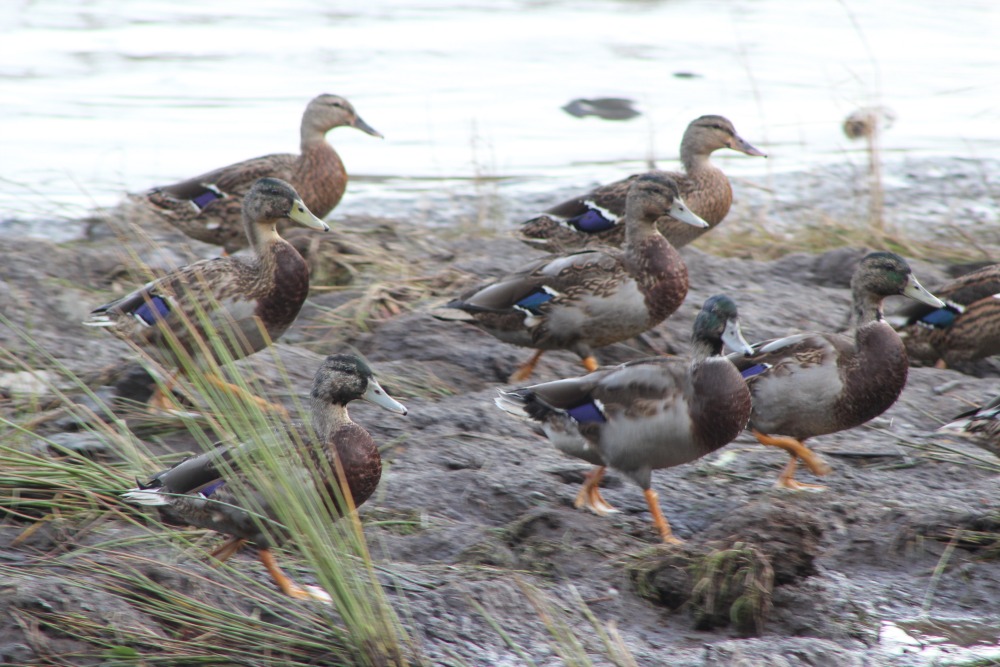
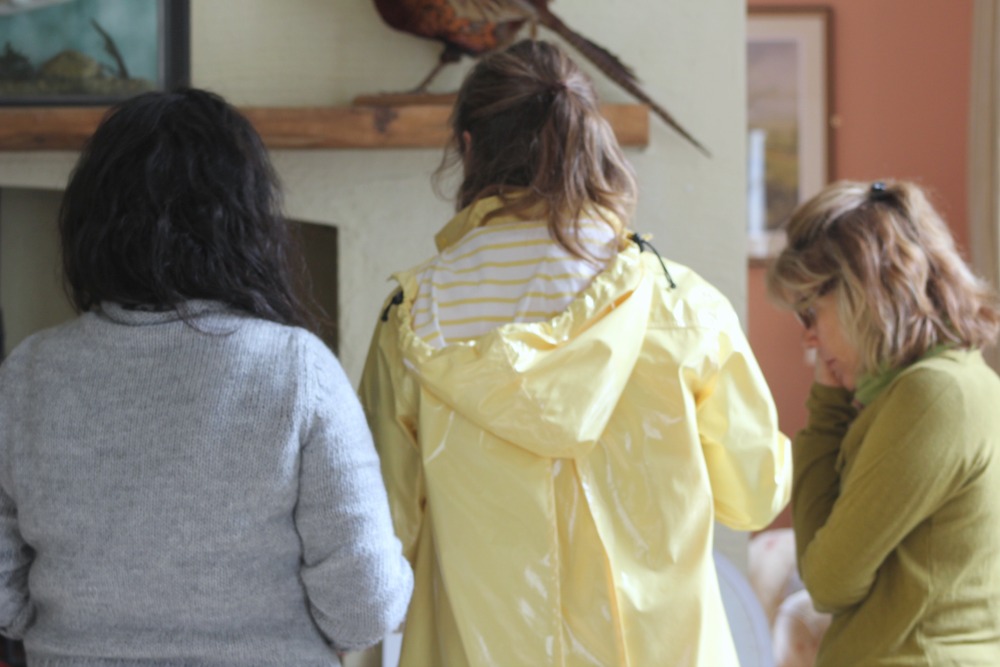
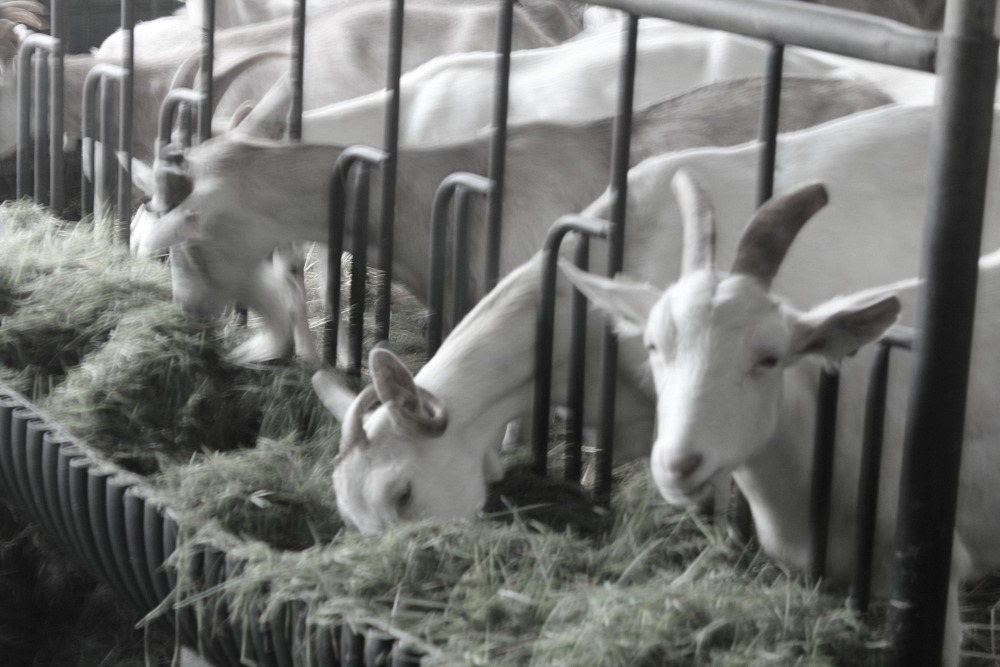
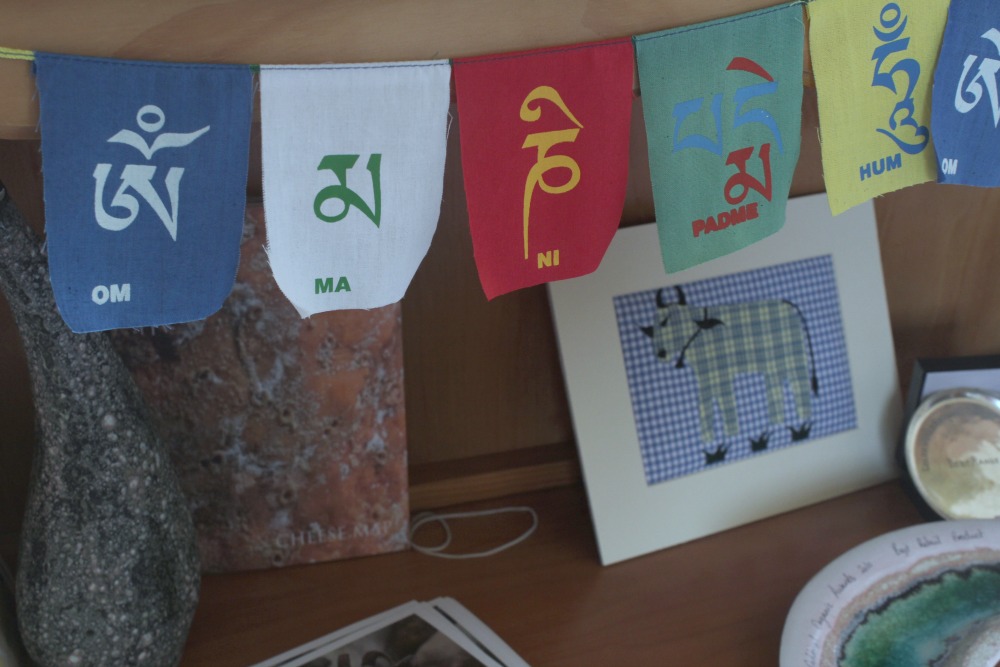
left: a donkey who wandered on the property, top right: at St. Tola's Organic Goat cheese farm, bottom right: our lunch.
left: Shane telling us there's an eagle over yonder, top right: Bea at the pub (thanks to Shane who drove us there!, bottom right: our lunch spot.
top left: the ducks on the property, bottom left: a thrift store find, top right: the thrift store, bottom right: near the house.
left top: food left for the animals, left bottom: Alison in the kitchen, top right: Alison cooking, bottom right: our detour to the woollen mill.










